|
2280 to 2281 FSS Forensic
Report re G & K McCann DNA
samples 2007.07.28 |
|
TRANSLATION BY ALBYM |
|
09-Processos
Vol IX Pages 2280 to 2281 |
|
09_VOLUME_IXa_Page_2280 |
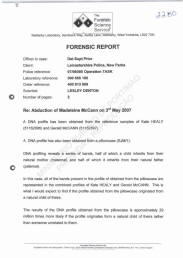 |
|
09_VOLUME_IXa_Page_2281 |
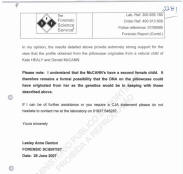 |
THE FORENSIC
SCIENE SERVICE
WETHERBY LABORATORY, SANDBECK WAY, AUDBY LANE, WETHERBY, WEST
YORKSHIRE, LS22 7DN
FORENSIC REPORT
Officer in case: Det Supt Prior
Client: Leicestershire Police, New Parks
Police reference: 07/06085 Operation TASK
Laboratory reference: 300 655 190
Order reference: 400 913 6069
Scientist: Lesley Denton
Number of pages: 2
Re: Abduction of Madeleine McCann on 3rd May 2007
A DNA profile has been obtained from the reference samples of
Kate HEALY (51162896) and Gerald McCANN (511622897).
A DNA profile has also been obtained from a pillowcase (SJM/1).
DNA profiling reveals a series of bands, half of which a child
inherits from their natural mother (maternal) and half of which
it inherits from their natural father (paternal).
In this case, all of the bands present in the profile of
obtained from the pillowcase are represented in the combined
profiles of Kate HEALY and Gerald McCANN. This what I would
expect to find in the profile obtained from the pillowcase
originated from a natural child of theirs.
The results of the DNA profile obtained from the pillowcase is
approximately 29 million times more likely if the profile
originates from a natural child of theirs rather than someone
unrelated to them.
In my opinion, the results detailed above provide extremely
strong support for the view that the profile obtained from the
pillowcase originates from a natural child of Kate HEALY and
Gerald McCANN.
Please note: I understand that the McCANN - s have a second
female child. It therefore remains a formal possibility that the
DNA on the pillowcase could have originated from her as the
genetics would be in keeping with those described above.
If I can be of further assistance or you require a CJA statement
please do not hesitate to contact me at the laboratory on 01937
548287.
Yours sincerely,
Lesley Ann Denton
FORENSIC SCIENTIST
Date: 28 June 2007 |
|
2282
FSS Document regarding
sample destruction
2007.08.21(English) |
|
09- Processo 09
IX Page 2282 also Outros Apensos VolI Page
97 |
|
09_VOLUME_IXa_Page_2282 |
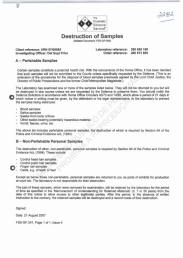 |
Date 2007.08.21
Letter from the FSS
Destruction of Samples
Investigating officer. Stuart Prior
A - Perishable samples.
Certain samples constitute a potential health risk. With the
concurrence of the Home Office, it has been decided that such
samples will not be submitted to the courts unless specifically
requested by the Defence. (This is an extension of the
procedures for the disposal of blood samples previously agreed
by the Lord Chief Justice, the Director of Public Prosecutions
and the former Chief Metropolitan Magistrate.
The laboratory has examined one or more of the samples listed
below. They will not be returned to you but will be destroyed in
due course unless we are requested by the Defence to preserve
them. You should notify the Defence solicitors in accordance
with Home Office circulars 40/73 and 74/82 which allow a period
of 21 days in which notice in writing must be given, by the
defendant or his legal representative to the laboratory to
prevent the samples being destroyed.
- Blood samples.
- Saliva samples.
- Swabs from body orifices.
- Other swabs bearing potentially hazardous material.
- Vomit, faeces, urine, etc.
The above list includes perishable personal samples, the
destruction of which is required by Section 64 of the Police and
Criminal Evidence Act (1984).
B - Non-Perishable samples
The destruction of other, non-perishable personal samples is
required by Section 64 of the Police and Criminal Evidence Act.
These include:
- Control head hair samples.
- Control pubic hair samples.
- Finger nail samples.
- Casts- e.g of teeth or feet.
Except as below those non-perishable personal samples are
returned to you as parts of exhibits for production at court,
etc. The laboratory is not responsible for their destruction.
The part of these samples which were removed for examination,
will be retained by the laboratory for the period of time as
specified in the MOU for Retained Materials (3, 7 or 30 years)
from the date of this notice to allow access to other legitimate
parties. After this period, in the absence of written
instruction to the contrary, the retained samples will be
destroyed and a record made of their destruction.
Signed.
Dated 21st August 2007.
Page one of one |
|
2287 to 2288
Forensic Report re -
Amelia & Sean DNA samples
2007.07.18(English) |
|
09-Processos Vol IX 2287 to 2288 |
|
09_VOLUME_IXa_Page_2287 |
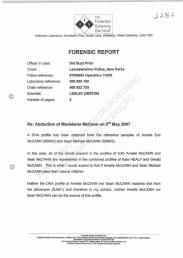 |
|
09_VOLUME_IXa_Page_2288 |
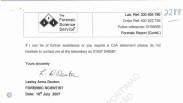 |
THE FORENSIC SCIENCE SERVICE
WETHERBY LABORATORY, SANDBECK WAY,
AUDBY LANE, WETHERBY, WEST YORKSHIRE, LS22 7DN
FORENSIC REPORT
Officer in case: Det Supt Prior
Client: Leicestershire Police, New
Parks
Police reference: 07/06085 Operation
TASK
Laboratory reference: 300 655 190
Order reference: 400 922 755
Scientist: Lesley Denton
Number of pages: 2
Re: Abduction of Madeleine McCann on
3rd May 2007
A DNA profile has been obtained from
the reference samples of Amelie Eve McCANN (SBM/2) and Sean
Michael McCANN (SBM/3).
In this case, all of the bands
present in the profiles of both Amelie McCANN and Sean McCANN
are represented in the combined profiles of Kate HEALY and
Gerald McCANN. This is what I would expect to find if Amelie
McCANN and Sean Michael McCANN were their natural children.
Neither the DNA profile of Amelie
McCANN nor Sean McCANN matches that from the pillowcase (SJM/1)
and therefore in my opinion, neither Amelie McCANN nor Sean
McCANN can be the source of this profile.
If I can be of further assistance or
you require a CJA statement please do not hesitate to contact me
at the laboratory on 01937 548287.
Yours sincerely,
Lesley Ann Denton
FORENSIC SCIENTIST
Date: 28 June 2007 |
|
2617 to 2623
Email from
Stuart Prior re: FSS
analysis (English) and
translation into Portuguese)
|
|
See
also Madeleines DNA |
|
10- Processo 10 -
VOLUME Xa; PDF page 123-124; Case file pages 2617-2618. |
|
10VOLUME_Xa_Page_2617 |
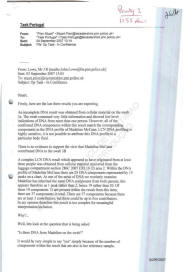 |
|
10VOLUME_Xa_Page_2618 |
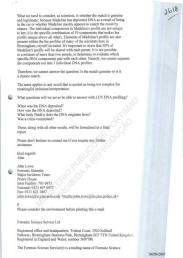 |
|
10VOLUME_Xa_Page_2619 |
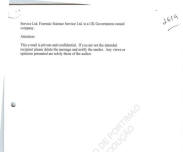 |
|
10VOLUME_Xa_Page_2620 |
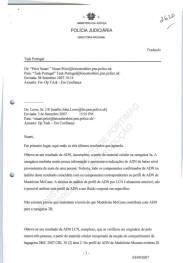 |
|
10VOLUME_Xa_Page_2621 |
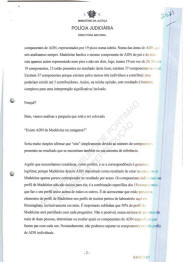 |
|
10VOLUME_Xa_Page_2622 |
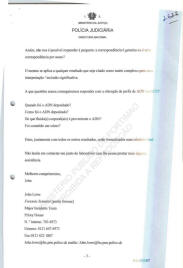 |
|
10VOLUME_Xa_Page_2623 |
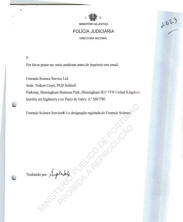 |
Task
Portugal
From: "Prior Stuart"
<Stuart.Prior@leicestershire.pnn.police.uk>
To: "Task Portugal"
<Task.Portugal@leicestershire.pnn.police.uk>
Sent: 04 September 2007 10:14
Subject: FW: Op Task - in
Confidence
From: Lowe, Mr J R
[mailto:John.Lowe@fss.pnn.police.uk
Sent: 03 September 2007 15:01
To:
stuart.prior@leicestershire.pnn.police.uk
Subject: Op Task - In Confidence
Stuart
Firstly, here are the last three
results you are expecting
An incomplete DNA result was
obtained from cellular material
on the swab 3a. The swab
contained very little
information and showed low level
indications of DNA from more
than one person. However, all of
the confirmed DNA components
within this result match the
corresponding components in the
DNA profile of Madeline McCann.
LCN DNA profiling is highly
sensitive it is not possible to
attribute this DNA profile to a
particular body fluid.
There is no evidence to support
the view that Madeline MCCann
contributed DNA to the swab 3B.
A complex LCN DNA result which
appeared to have originated from
at least three people was
obtained from cellular material
recovered from the luggage
compartment section 286C 2007
CRL10 (2) area 2. Within the DNA
profile of Madeline McCann there
are 20 DNA components
represented by 19 peaks on a
chart. At one of the areas of
DNA we routinely examine
Madeleine has inherited the same
DNA component from both parents;
this appears therefore as 1 peak
rather than 2, hence 19 rather
than 20. Of these 19 components
15 are present within the result
from this item; there are 37
components in total. There are
37 components because there are
at least 3 contributors; but
there could be up to five
contributors. In my opinion
therefore this result is too
complex for meaningful
interpretation/inclusion.
Why - ...
Well lets look at the question
that is being asked
"Is there DNA from Madeline on
the swab "
It would be very simple to say
"yes" simply because of the
number of components within the
result that are also in her
reference sample.
What we need to consider, as
scientists, is whether the match
is genuine and legitimate;
because Madeline has deposited
DNA as a result of being in the
car or whether Madeline merely
appears to match the result by
chance. The individual
components in Madeline's profile
are not unique to her, it is the
specific combination of 19
components that makes her
profile unique above all others.
Elements of Madeline's profile
are also present within the the
profiles of many of the
scientists here in Birmingham,
myself included. it's important
to stress that 50% of Madeline's
profile will be shared with each
parent. It is not possible in a
mixture of more than two people,
to determine or evaluate which
specific DNA components pair
with each other. Namely, we
cannot separate the components
out into 3 individual DNA
profiles.
Therefore, we cannot answer the
question: is the match genuine
or is it a chance match.
The same applies to any result
that is quoted as being too
complex for meaningful
inclusion/interpretation
What questions will we never be
able to answer with LCN DNA
profiling -
When was the DNA deposited -
How was the DNA deposited -
What body fluid(s) does the DIVA
originate from -
Was a crime committed -
These, along with all other
results, will be formalised in a
final report
Please don't hesitate to contact
me if you require any further
assistance
kind regards
John
John Lowe Forensic Scientist
Major Incidents Team
Priory House
Inter Facility: 703 6973
External: 0121 607 6973
Fax: 0121 6221807
Please consider the environment
before printing this e-mail
Forensic Science Service Ltd
Registered office and
headquarters: Trident Court 2920
Solihull
Parkway, Birmingham Business
Park, Birmingham B37 7YN United
Kingdom.
Registered in England and Wales:
number 5607780
The Forensic Science Service (r)
is a trading name of Forensic
Science |
|
2642 to 2652
FSS report 6 Sept 2007 by
John Lowe
Info re UK A.C.P.O Cadaver
dogs
(Portuguese translation)
|
|
10-Processo 10
- VOLUME Xa; pages 2642 - 2652 |
|
10VOLUME_Xa_Page_2642 |
10VOLUME_Xa_Page_2643 |
10VOLUME_Xa_Page_2644 |
 |
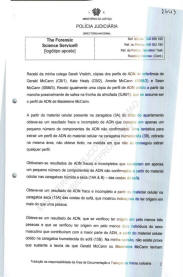 |
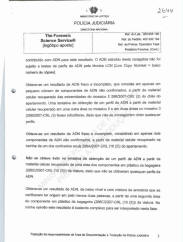 |
|
10VOLUME_Xa_Page_2645 |
10VOLUME_Xa_Page_2646 |
10VOLUME_Xa_Page_2647 |
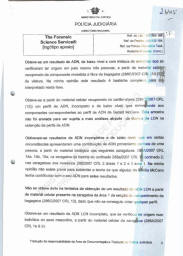 |
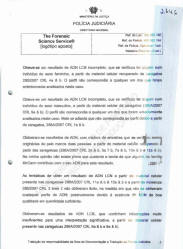 |
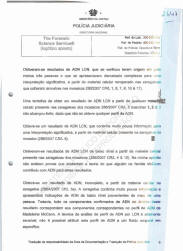 |
|
10VOLUME_Xa_Page_2648 |
10VOLUME_Xa_Page_2649 |
10VOLUME_Xa_Page_2650 |
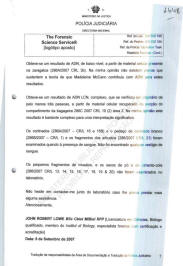 |
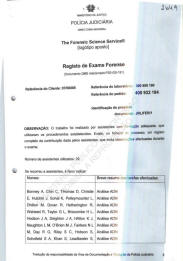 |
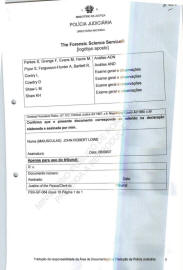 |
|
10VOLUME_Xa_Page_2651 |
10VOLUME_Xa_Page_2652 |
10VOLUME_Xa_Page_2652a |
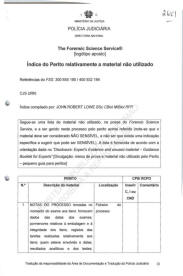 |
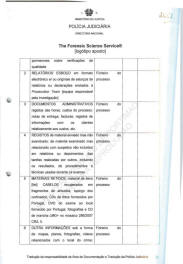 |
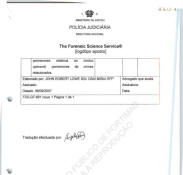 |
|
|
2653 to 2660
FSS report 6 Sept 2007 by
John Lowe Info re UK
Cadaver dogs (Original
English) |
|
10-Processo 10
- VOLUME Xa; pages 2653-2660 |
|
10VOLUME_Xa_Page_2653 |
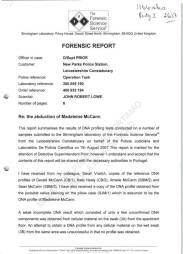 |
|
10VOLUME_Xa_Page_2654 |
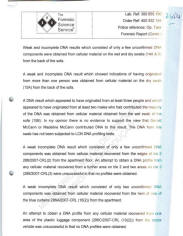 |
|
10VOLUME_Xa_Page_2655 |
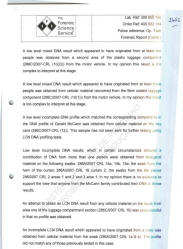 |
|
10VOLUME_Xa_Page_2656 |
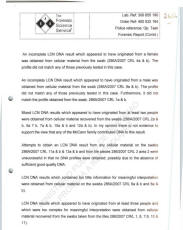 |
|
10VOLUME_Xa_Page_2657 |
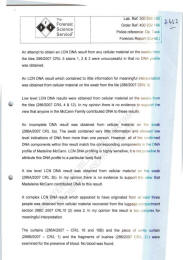 |
|
10VOLUME_Xa_Page_2658 |
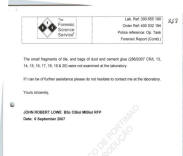 |
|
10VOLUME_Xa_Page_2659 |
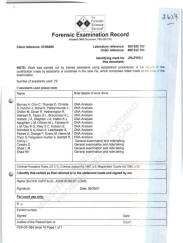 |
|
10VOLUME_Xa_Page_2660 |
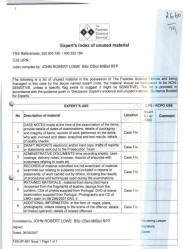 |
SOURCE: Processo 10 - VOLUME Xa;
PDF page 160-165; Case file pages 2653-2658. FORENSIC REPORT
Officer in case: D/Supt PRIOR
Customer: New Parks Police
Station,
Leicestershire Constabulary
Police reference: Operation Task
Laboratory reference: 300 655
190
Order reference: 400 932 184
Scientist: JOHN ROBERT LOWE
Number of pages: 6
Re: the abduction of Madeleine
McCann
This report summarises the
results of DNA profiling tests conducted on a number of samples
submitted to the Birmingham laboratory of the Forensic Science
Service(R) from the Leicestershire Constabulary on behalf of the
Pol - ia Judiciaria and Laboratorio De Policia Cientifica on 7th
August 2007 This report is marked for the attention of Detective
Superintendent Prior; however I understand and accept that the
contents of this report will be shared with the necessary
authorities in Portugal.
I have received from my
colleague, Sarah Vraitch, copies of the reference DNA profiles
of Gerald McCann (CB/1), Kate Healy (CB/2), Amelie McCann
(SBM/2) and Sean McCann (SBM/3). I have also received a copy of
the DNA profile obtained from the possible saliva staining on
the pillow case (SJM/1) which is assumed to be the DNA profile
of Madeleine McCann.
A weak incomplete DNA result
which consisted of only a few unconfirmed DNA components was
obtained from cellular material on the swab (3A) from the
apartment floor. An attempt to obtain a DNA profile from any
cellular material on the wet swab (3B) from the same area was
unsuccessful in that no profile was obtained.
Weak and incomplete DNA results
which consisted of only a few unconfirmed DNA components were
obtained from cellular material on the wet and dry swabs (14A &
B} from the back of the sofa.
A weak and incomplete DNA result
which showed indications of having originated from more than one
person was obtained from cellular material on the dry swab (15A)
from the back of the sofa.
A DNA result which appeared to
have originated from at least three people and which appeared to
have originated from at least two males who had contributed the
majority of the DNA was obtained from cellular material obtained
from the wet swab of the sofa (15B). in my opinion there is no
evidence to support the view that Gerald McCann or Madeline
McCann contributed DNA to this result. The DNA from this swab
has not been subjected to LCN DNA profiling tests.
A weak incomplete DNA result
which consisted of only a few unconfirmed DNA components was
obtained from cellular material recovered from the edges of tile
2 286/2007-CRL(2) from the apartment floor. An attempt to obtain
a DNA profile from any cellular material recovered from a
further area on tile 2 and two areas on tile 3 (286/2007-CRL(3)
were unsuccessful in that no profiles were obtained.
A weak incomplete DNA result
which consisted of only two unconfirmed DNA components was
obtained from cellular material recovered from the hem of one of
the blue curtains 286A/2007-CRL(16(2)) from the apartment.
An attempt to obtain a DNA
profile from any cellular material recovered from one area of
the plastic luggage component (286C/2007-CRL(10(2))) from the
motor vehicle was unsuccessful in that no DNA profiles were
obtained.
A low level mixed DNA result
which appeared to have originated from at least two people was
obtained from a second area of the plastic luggage component
(286C/2007-CRL(10(2))) from the motor vehicle. In my opinion
this result is too complex to interpret at this stage.
A low level mixed DNA result
which appeared to have originated from at least three people was
obtained from cellular material recovered from the fibre coated
luggage component (286C/2007-CRL(10(1))) from the motor vehicle.
In my opinion this result is too complex to interpret at this
stage.
A low level incomplete DNA
profile which matched the corresponding components in the DNA
profile of Gerald McCann was obtained from cellular material on
the key card (286C/2007-CRL(12)). This sample has not been sent
for further testing using LCN DNA profiling tests.
Low level incomplete DNA
results, which in certain circumstances showed a contribution of
DNA from more than one person were obtained from biological
material on the following swabs: 286A/2007 CRL 14a, 14b, 15a;
the swab from the hem of the curtain 286A/2007 CRL 16 curtain 2;
the swabs from the tile pieces 286/2007 CRL 2 areas 1 and 2 and
3 area 1. In my opinion there is no evidence to support the view
that anyone from the McCann family contributed their DNA to them
results.
An attempt to obtain an LCN DNA
result from any cellular material on the swab from area one of
the luggage compartment section (286C/2007 CRL 10) was
unsuccesful in that no profile was obtained.
An incomplete LCN DNA result
which appeared to have originated from a male was obtained from
cellular material from the swab (286A/2007 CRL 1a & b). The
profile did not match any of those previously tested in this
case.
An incomplete LCN DNA result
which appeared to have originated from a female was obtained
from cellular material from the swab (286A/2007 CRL 4a & b). The
profile did not match any of those previously tested in this
case.
An incomplete LCN DNA result
which appeared to have originated from a male was obtained from
cellular material from the swab (286A12007 CRL 9a & b). The
profile did not match any of those previously tested in this
case. Furthermore, it did not match the profile obtained from
the swab, 286A/2007 CRL 1a & b.
Mixed LCN DNA results which
appeared to have originated from at least two people were
obtained from cellular material recovered from the swabs
(286A/2007 CRL 2a & b, 5a 7 b, 7a & b, 10a & b and 12a & b). in
my opinion there is not evidence to support the view that any of
the McCann family contributed DNA to Yhis result.
Attempts to obtain an LCN DNA
result from any cellular material on the swabs 286A/2007 CRL 11a
& b & 13a & b and from tile pieces 286/2007 CRL 3 area 2 were
unsuccessful in that no DNA profiles were obtained; possibly due
to the absence of sufficient good quality DNA.
LCN DNA results which contained
too little information for meaningful interpretation were
obtained from cellular material on the swabs 286A/2007 CRL 6a &
b and 8a & b).
LCN DNA results which appeared
to have originated from at least three people and which were too
complex for meaningful interpretation were obtained from
cellular material recovered from the swabs taken from the tiles
286/2007 CRL 1, 6, 7,8, 10 & 11).
An attempt to obtain an LCN DNA
result from any cellular material on the swabs from the tiles
286/2007 CR/L 5 stains 1, 2 & 3 were unsuccessful in that no DNA
profile was obtained.
An LCN DNA result which
contained to little information for meaningful interpretation
was obtained from cellular material on the swab from the tile
(286/2007 CR/L 9).
Low level LCN DNA results were
obtained from cellular material on the swabs from the tiles
(286/2007 CR/L 4 & 12). In my opinion there is no evidence to
support the view that anyone in the McCann Family contributed
DNA to these results.
An incomplete DNA result was
obtained from cellular material on the swab (286A/2007 CRL 3a).
The swab contained very little information and showed low level
indications of DNA from more than one person. However, all of
the confirmed DNA components within this result match the
corresponding components in the DNA profile of Madeline McCann.
LCN DNA profiling is highly sensitive; it is not possible
attribute this DNA profile to a particular body fluid.
A low level LCN DNA result was
obtained from cellular material on the swab (286A/2007 CRL 3b).
In my opinion there is no evidence to support the view that
Madeleine McCann contributed DNA to this result.
A complex LCN DNA result which
appeared to have originated from at least three people was
obtained from cellular material recovered from the luggage
compartment section 286C 2007 CRL10 (2) area 2. In my opinion
this result is too complex for meaningful interpretation.
The curtains (286A/2007 - CR/L
16 and 16B) and the piece of white curtain (286B/2007 - CR/L 1)
and the fragments of bushes (286/2007 CR/L 21) were examined for
the presence of blood. No blood was found.
The small fragments of tile, and
bags of dust and cement glue (286/2007 CR/L 13, 14, 15, 16, 17,
18, 19 & 20) were not examined at the laboratory.
if I can be of further
assistance please do not hesitate to contact me at the
laboratory.
Yours sincerely,
JOHN ROBERT LOWE BSc CBiol
NliBiol RFP
Date: 6 September 2007
Processos Vol X Pages 2659 - 2660
Note: This
an annex to the Lowe report dated 6th September 2007. In
English.
The Forensic Science Service
Forensic Examination Record
Client reference: 07/06085
Laboratory Reference: 300 655 190
Order Reference: 400 932 184
Identifying mark for this document: JRL/FER/1
NOTE: Work was carried out by trained assistants using
established procedures. A full record of the contribution made
by assistants is contained in the case file, which comprises
notes made at the time of the examination.
Number of assistants used: 29
If assistants used please state.
Name Brief details of work done
DNA Analysis:
Bonney A, Chin C, Thomas D, Chrities E, Hutchin J, Sohat K,
Pelleymounter L, Dhillin M, Doran R, Hetherington R, Waheed R,
Taylor GL, Briscombe H.L., Hodson JA, Deighton JA, Halton KJ,
Naughton, LM, O?Brien MJ, Fairless NLM, Day RG, Riley SC, Hobson
S, Schofield SA, Khan S, Leadbeater R, Parkes S, Grange F, Evans
M, Harris M, Pryor S, Fergusson-Hunter A, Bartlett R,
General Examination and Note taking:
Coniry L, Cowdry D, Shaw LM, Shaw KH.
Criminal Procedure Rules 27 1 (1) Criminal Justice Act 1967 9
Magistrates?s Court Act 1980 s %B
I identify this exhibit as that referred to in the statement
made and signed by me.
Name: John Robert Lowe
Date: 06-09-07
For court use only:
Rv
Exhibit number
Signed date
Justice of the peace/clerk to Court
Page 1 of 1
Processos Vol X
Page 2660
The Forensic Science Service
Expert's Index of Unused Material
FSS References : 300 655 190/400 932 184
CJS URN
Index compiled by John Robert Lowe BSc Cbiol MIBiol RFP
The following is a list of unused material in the possession of
the Forensic Science Services and being managed in this case by
the above named expert (note, the material should be considered
to be NON - SENSITIVE, unless a specific flag exists to suggest
it might be SENSITIVE). The list is provided in accordance with
the guidance given in ?Disclosure: Expert?s evidence and unused
material ? Guidance Booklet for Experts?.
EXPERT'S USE
Number Description of material
1. CASE NOTES made at the time of the examination of the items:
provide details of dates of examinations; details of packaging
and integrity of items; records of work performed on the items,
who was involved and dates; analytical and test results; details
of quality checks
Location: Case Files.
2. DRAFT REPORTS ' electronic and/or hard copy drafts of reports
of statements sent out to the Prosecution Team.
Location: Case Files.
3. ADMINISTRATIVE DOCUMENTS time recording sheets, case
costings, delivery notes, invoices, records of enquiries with
customers relating to costs, etc.
Location : Case Files.
4. RECORDS of material submitted but not examined, of material
examined but relating to suspects not included in reports or
statements; of work carried out by others, including the
results; of procedures and techniques used during the
examinations.
Location: Case Files.
5. RETAINED MATERIALS, material from items (list), Hairs
recovered from the fragments of bushes, tapings from the
curtains, CDs of photos supplied from Portugal, DVD of scene
examination supplied from Portugal, Photographs and CD of LMG +
stain on tile 286/2007 CR/L 5.
Location: Case Files.
6. ADDITIONAL INFORMATION in the form of maps, plans,
photographs, videos relating to the scene of the offence,
details of modus operandi, details of related offences.
Location: Case Files
Completed by John Robert Lowe BSc Cbiol MIBiol RFP
Signed (Unsigned copy)
Dated 06-09-2007
Page 1 of 1 |
|
3465
to 3466
FSS Items for Return
FFS |
|
13-Processo 13
P. 3465 - 3466 |
|
13_VOLUME_XIIIa_Page_3465 |
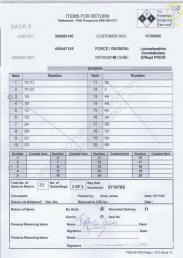 |
|
13_VOLUME_XIIIa_Page_3465 |
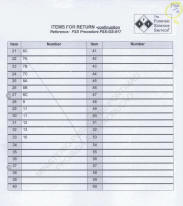 |
Return of samples.
Cross-reference to Lowe(final)
and Palmer reports:
Delivery 286: 24 items listed
- All referenced in Lowe(final);
- Items 1-20 all NON-perishable; No record found of their having
been returned to PT;
- Items 21-24 perishable - profiles obtained from 3; bush
unfruitful.
Delivery 286A: 33 items listed
- All referenced in Lowe(final);
- Items 1-15 A&B (30 items) all perishable;
- Items 16 (2 pieces) and 16B (curtains) not perishable; No
record found of their having been returned to PT.
- Item 16 (one blue curtain) and 16B (white curtain) not tested.
Delivery 286B: 1 item listed
- Referenced in Lowe(final);
- (curtain section) not perishable and not tested. No record
found of it having been returned to PT.
Delivery 286C: 34 items listed
- Items 1D, 2E, 10, 12 and 14 (profile) referenced in
Lowe(final);
- Items 1-9, 11 (all hairs and fibres) referenced in Palmer
report;
- Items 13 and 15 not referenced in either report;
- Item 14 perishable;
- Items 1-13 and 15 non-perishable: and record found of their
return to PT.
Overall Summary:
- 92 items listed;
- 90 items referenced in the two reports;
- 35 items perishable, presumed consumed, stored or destroyed
per FSS rules;
- 33 non-perishable items: record found of their return;
- 24 non-perishable items: no record found of their return;
- 3 items not tested;
- 2 items not referenced in either report (286C: 13 and 15).
Question: Are there other return records for deliveries 286 (20
items), 286A (3 items) and 286B (1 item) -
3472
- Letter 7 November 2007 (in English) to Director of the
FSS regarding fibres found in Renault Scenic
3473
- Portuguese version of page 3472 |
|
13 Processos Vol XIII Page 3472 to 3473 |
|
13_VOLUME_XIIIa_Page_3472 |
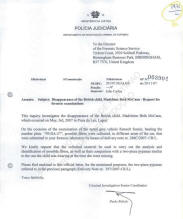 |
|
13_VOLUME_XIIIa_Page_3473 |
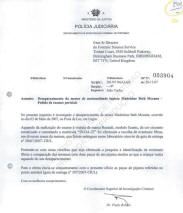 |
Letter in English (PT version is on page 3473) Letter is
repeated on page 3488, showing Lowe's signature of
receipt, 29-07)
To the Director of the FSS
Birmingham
Date: 28 11 07
Reference n? 201/07.O GALGS
Inspector: Joao Carlos
Subject: Disappearance of the British Child, Madeleine
Beth McCann ? Request for forensic examination
This inquiry investigates the disappearance of the
British child, Madeleine Beth McCann, which occurred on
May 3rd, 2007 in Praia da Luz, Lagos.
On the occasion of the examination of the metal grey
vehicle Renault Scenic, bearing the number plate
?59-DA-27?, possible fibres were collected, in different
areas of the car, that were submitted to your forensic
laboratory by means of delivery note n? 286C/2007 ?
CR/L.
We kindly request that the collected material be used to
carry out the analysis and identification of possible
fibres, as well as their comparison with a two-piece
pyjamas similar to the ones the child was wearing at the
time she went missing.
Please find enclosed to this official letter, for the
mentioned purposes, the two piece pyjamas referred to in
the previous paragraph (Delivery Note n? 397/2007-CR/L).
Yours faithfully,
Criminal Investigation Senior Coordinator
Paolo Rebelo.
|
|
3578 to 3582
List of
vestiges collected from 5A
and examined by FSS
3583 to 3590
Final proposed English
version of pages 3940-3949
plus e-fit of
"sunglasses-man" |
13-Processos
Vol XIII Pages 3578 to 3590
13-Vol XIII pages 3940 to 3948 |
|
13_VOLUME_XIIIa_Page_3578 |
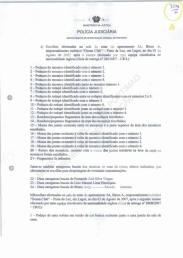 |
|
13_VOLUME_XIIIa_Page_3579 |
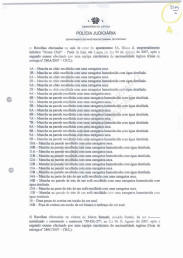 |
|
13_VOLUME_XIIIa_Page_3580 |
 |
|
13_VOLUME_XIIIa_Page_3581 |
 |
|
13_VOLUME_XIIIa_Page_3582 |
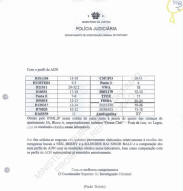 |
|
13_VOLUME_XIIIa_Page_3583 |
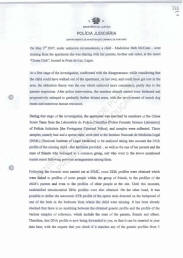 |
|
13_VOLUME_XIIIa_Page_3584 |
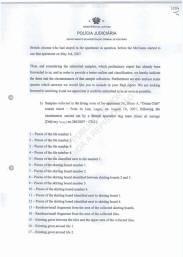 |
|
13_VOLUME_XIIIa_Page_3585 |
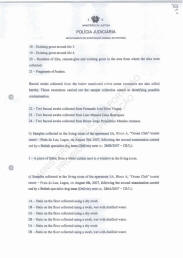 |
|
13_VOLUME_XIIIa_Page_3586 |
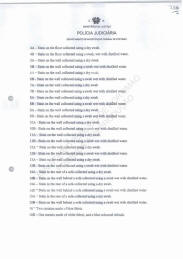 |
|
13_VOLUME_XIIIa_Page_3587 |
 |
|
13_VOLUME_XIIIa_Page_3588 |
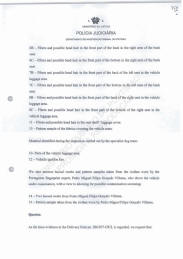 |
|
13_VOLUME_XIIIa_Page_3589 |
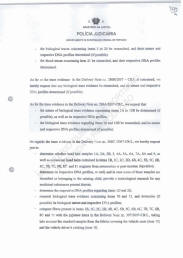 |
|
13_VOLUME_XIIIa_Page_3590 |
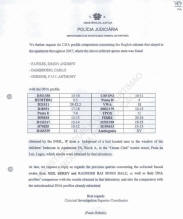 |
Same text also in
.
(Note: There is no
date for this correspondence, neither is there a reference as to
whom it is addressed).
a. List of samples collected from 5A and examined and report of
events and evidence collected
On May 3rd 2007, under unknown circumstances, a child -
Madeleine Beth McCann - went missing from the
apartment she was sharing with her parents, brother and sister,
at the resort - Ocean Club - , located in Praia da Luz,
Lagos.
At a first stage of the investigation, confronted with the
disappearance, while considering that the child could have
walked out of the apartment, on her own, and could have got lost
in the area, the abduction theory was the one which achieved
more consistency, partly due to the parents suspicions. After
police intervention, the searches already started furthered and
progressively enlarged to gradually farther distant area, with
the involvement of search dog teams and numerous human
resources.
During that stage of the investigation, the apartment was
searched by members of the Crime Scene Team from the Laboratorio
de Policia Cientifica [Police Forensic Science Laboratory] of
the Portuguese Criminal Police, and samples were collected.
Those samples, namely hair and a sperm stain, were sent to the
National Institute of Legal Medicine (INML)to be analysed taking
into account the DNA profile of the missing child-that had been
provided-, as well as one of her parents and the ones of friends
who belonged to a common group, and who went to the above
mentioned tourist resort following previous arrangements among
them.
Following the forensic tests carried out at INML, some DNA were
obtained which linked profiles of some people within the group
of friends, to the profiles of the child - s parents and even to
the profiles of other people at the site. Until this moment,
unidentified mitochondrial DNA profiles were also obtained. On
the other hand, it was possible to define the autosomic STR
profile of the sperm stain detected on the bedspread of one of
the beds in the bedroom from where the child went missing. It
has been already checked that there is no matching between the
obtained genetic profile and the profile of the various samples
of reference, which include the ones of the parents, friends,
and others. Therefore, that DNA profile is now being forwarded
to you, so that it can be inserted in your database, with the
request that you check if it matches any of the genetic profiles
from 3 British citizens who had stayed in the apartment in
question, before the McCanns started to use that apartment on
May 3rd, 2007.
Thus, and considering the submitted samples, which preliminary
report has already been forwarded to us, and in order to provide
a better outline and classification, we hereby indicate the data
and the circumstances of that sample collection. Furthermore, we
also enclose some queries which answers we would like you to
include in your final report. We are looking forward to
receiving it and we appreciate it could be submitted to us as
soon as possible.
b) Samples collected in the living room of the apartment 5A,
block A, Ocean Club, tourist resort - Praia da Luz,
Lagos, on August 1st, 2007, following the examination carried
out by a British specialist dog team. Delivery note no. 286/2007
- CR/L):
1. Pieces of tile number 1.
2. Pieces of tile number 2.
3. Pieces of tile number 3.
4. Pieces of tile number 4.
5. Pieces of tile identified next to tile number 1.
6. Pieces of skirting board number 1.
7. Pieces of skirting board number 2.
8. Pieces of skirting board identified between skirting boards 2
and 3.
9. Pieces of skirting board number 3.
10. Pieces of skirting board number 4.
11. Pieces of the skirting board identified next to skirting
board 1.
12. Pieces of the skirting board identifies next to skirting
board 4.
13. Residues/small fragments from the area of the collected
skirting boards.
14. Residues/small fragments from the are of the collected
tiles.
15. Existing grout between the tiles and the upper area of the
collected tiles.
16. Existing grout around tile 1.
17. Existing grout around tile 2.
18. Existing ground around tile 3.
19. Existing grout around tile 4.
20. Residues of tiles, cement-glue and existing grout in the
area from where the tiles were collected.
21. Fragments of bushes.
Mouth swabs collected from the below mentioned crime scene
examiners are also added hereby. Those examiners carried out the
sample collections aimed at identifying possible contamination.
22. Two mouth swabs from Fernando Jose Silva Viegas.
23. Two mouth swabs from Lino Manuel Lima Henriques.
24. Two mouth swabs from Bruno Jorge P Ossidonio Mendes Antunes.
b) Samples collected in the living room of the apartment 5A,
block A, Ocean Club, tourist resort, Praia da Luz, Lagos, on
August 3rd, 2007, following the second examination carried out
by a British specialist dog team (Delivery note no.
286B/2007-CR/L):
1. A piece of fabric from white curtain next to a window in the
living room.
C) Samples collected in the living room of the apartment 5A,
block A, Ocean Club tourist resort, Praia Da Luz, Lagos, on
August 4th , 2007, following the second examination carried out
by a British specialist dog team (Delivery note no.
286A/2007-CR/L):
1A. Stain on the floor collected using a dry swab.
1B. Stain on the floor collected using a swab, wet with
distilled water.
2A. Stain on the floor collected using a dry swab.
2B. Stain on the floor collected using a swab, wet with
distilled water.
3A. Stain on the floor collected suing a dry swab.
3B. Stain on the floor collected using a swab, wet with
distilled water.
4A. Stain on the floor collected using a dry swab.
4B. Stain on the floor collected using a swab, wet with
distilled water.
5A. Stain on the wall using a dry swab.
5B. Stain on the wall collected using a swab wet with distilled
water.
6A. Stain on the floor collected using a dry swab.
6B. Stain on the wall collected using a swab wet with distilled
water.
7A. Stain on the floor collected using a dry swab.
7B. Stain on the wall collected using a swab wet with distilled
water.
8A. Stain on the floor collected using a dry swab.
8B. Stain on the wall collected using a swab wet with distilled
water.
9A. Stain on the floor collected using a dry swab.
9B. Stain on the wall collected using a swab wet with distilled
water.
10A. Stain on the floor collected using a dry swab.
10B. Stain on the wall collected using a swab wet with distilled
water.
11A. Stain on the floor collected using a dry swab.
11B. Stain on the wall collected using a swab wet with distilled
water.
12A. Stain on the floor collected using a dry swab.
12B. Stain on the wall collected using a swab wet with distilled
water.
13A. Stain on the floor collected using a dry swab.
13B. Stain on the wall collected using a swab wet with distilled
water.
14A. Stain in the rear of a sofa collected using a dry swab.
14B. Stain on the wall behind a sofa collected using a swab wet
with distilled water.
15A. Stain in the rear of a sofa collected using a dry swab.
16. Two curtains made of blue fabric.
16B. One curtain made of white fabric, and a blue coloured
tieback.
d) Samples collected in the metallic grey Renault Scenic
vehicle, number plate 59-Da-27, on August 6th, 2007, following
the second examination carried out by a British specialist dog
team (Delivery note no. 286C/2007-CR/L):
1A. Head hair collected from the driver - s seat.
2A. Head hair collected to the right of passenger - s seat.
2B. Head hair collected from the floor next to the right front
passenger - s seat.
3. Head hair collected between the front seats.
4A. Head hair collected from the left area of the back seat.
5A. Head hair collected from the middle area of the back seat.
6A. Head hair collected from the right area of the back seat.
7A. Head hair collected from the left seat of the luggage area.
8A. Head hair collected from the right seat of the luggage area.
9. Head hair collected from the vehicle luggage area.
1D. Nail fragment collected in the floor in front of the driver
- s seat.
2E. Nail fragment collected in the floor in front of the driver
- s seat.
1B. Fibres and possible head hair from the back of the driver -
s seat.
1C. Fibres and possible head hair from the bottom of the driver
- s seat.
2C. Fibres and possible head hair from the back of the right
front passenger - s seat.
2D. Fibres and possible head hair from the bottom of the right
front passenger - s seat.
4B. Fibres and possible head hair from the back in the left area
of the back seat.
4C. Fibres and possible head hair from the bottom in the left
area of the back seat.
5B. Fibres and possible head hair from the back in the middle
area of the back seat.
5C. Fibres and possible head hair from the bottom in the middle
area of the back seat.
6B. Fibres and possible head hair from the back in the right
area of the back seat.
6C. Fibres and possible head hair from the bottom in the right
area of the back seat.
7B. Fibres and possible head hair from the back of the left seat
in the vehicle luggage area.
7C. Fibres and possible head hair from the bottom in the left
area of the back seat.
8B. Fibres and possible head hair from the back of the right
seat in the vehicle luggage area.
8C. Fibres and possible head hair from the bottom of the right
seat in the vehicle luggage area.
11. Fibres and possible head hair in the rear shelf/luggage
cover.
13. Pattern sample of the fabric covering the vehicle seats.
Material identified during the inspection carried out by the
specialist dog team:
10. Parts of the vehicle luggage area.
12. Vehicle ignition key.
We also enclose mouth swabs and pattern samples taken from the
clothes worn by the Portuguese fingerprint expert, Pedro Miguel
Filipe Goncalo Vilhena, who drove the vehicle under examination,
with a view to allowing for possible contamination screening.
14. Two mouth swabs from Pedro Miguel Filipe Goncalo Vilhena.
15. Pattern samples taken from the clothes worn by Pedro Miguel
Filipe Goncalo Vilhena.
Queries:
As for trace evidence in the Delivery Note no. 286/207-CR/L is
regarded, we request that:
- the biological traces concerning items 1 to 20 be
researched, and their nature and respective DNA profiles
determined (if possible).
- the blood traces concerning item 21 be researched, and
their respective DNA profiles determined.
As far as the trace evidence in the Delivery Note no. 286B/2007
- R/L is concerned, we hereby request that any biological
evidence be researched, and its nature and respective DNA
profiles determined (if possible).
As for the trace evidence in the Delivery note no.
286A/2007-CR/L, we request that
- The nature of biological trace evidence concerning
items 1A to 15B be determined (if possible), as well as its
respective DNA profiles.
- The biological trace evidence regarding items 16 and
16B be researched, and its nature and respective DNA profiles
determined (if possible).
As regards the trace evidence in the Delivery Note no.
286C/2007-CR/L, we hereby request you to:
- Determine whether head hair samples 1A, 2A, 2B, 3, 4A,
5A, 6A, 7A, 8A, and 9, as well as occasional head hairs
contained in items 1B, 1C, 2C, 2D, 4B, 4C, 5B, 5C, 6B, 6C, 7B,
7C, 8B, 8C, and 11 originate from ante mortem or post-mortem
deposition;
- Determine its respective DNA profiles, as well; and in
case some of these samples are identified as belonging to the
missing child, provide a toxicological research for any
medicinal substances present therein;
- Determine the respective DNA profiles regarding items
1D and 2E;
- Research biological trace evidence concerning items 10
and 12, and determine (if possible) its biological nature and
respective DNA profiles;
- Compare fibres present in items 1B, 1C, @C, 2C, 4B, 4C,
5B, 5C, 6B, 6C, 7B, 7C, 8B, 8C, and 11 with the pyjamas items in
the Delivery Note no. 397/2007-CR/L. taking into account the
standard samples from the fabric covering the vehicle seats
(items 13) and the vehicle driver - s clothing (items 15).
We further request the DNA profile comparison concerning the
English citizens that stayed in the apartment throughout 2007,
where the above-referred sperm stain was found.
-FAWKES, SIMON ANDREW
-DAMBROSIO, CARLO
-GORDON, PAUL ANTHONY
With the DNA profile
D3S1358 15-18 CSFIPO 10-11
HUMTHOI 9.3 Penta D 9
D21511 29-32.2 VWA 18
D18551 17-18 D8S1179 12-13
Penta E 7-8 TPOX 11
D5S818 12-13 Fibra 20-24
D13S317 12-14 D2SI338 18-25
D75820 10-12 D19S433 13-15
D16S539 11 Amelogemine XY
Obtained by the INML, IP from a bedspread of a bed located next
to the window of the children - s bedroom in Apartment 5A, block
A, in the Ocean Club, tourist resort, Praia da Luz, Lagos, with
the results obtained by this laboratory.
At last, we request a reply as regards the previous queries
concerning the collected mouth swabs from NEIL BERRY and
RAJINDER RAJ SING BALU, as well as their DNA profiles
comparisons with the results obtained in that laboratory, and
also the comparison with the mitochondrial DNA profiles already
submitted.
Best Regards,
Criminal Investigation Superior Coordinator
Paulo Rebelo
*****Page 3590*****
Further to our previous message regarding dates and
circumstances concerning the collection of the evidence to be
examined in your laboratory, along with the enclosed queries, we
further inform you that a pair of pyjamas will be later handed
over (delivery note 397/2007-CR/L), similar to those Madeleine
Beth McCann was wearing when she went missing.
Best regards,
Criminal Investigation Superior Coordinator
Paulo Rebelo |
|
3933
Email from Paiva to Stuart
Prior re: questions to ask
the FSS 2007.10.31 |
|
13-Processos
Vol. XIII page. 3933 |
|
13_VOLUME_XIIIa_Page_3933 |
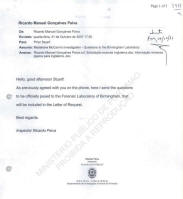 |
Ricardo Manuel Gon - lves Paiva
De: Ricardo Manuel Gon - lves Paiva
Enviado: quarta-feira, 31 de Outubro de 2007 17:20
Para: 'Prior Stuart'
Assunto: Madeleine McCann's investigation - Questons to the
Birmingham Laboratory
Anexos: Ricardo Manuel Gon - lves Paiva.vcf; Solicita - o exames
Inglaterra.doc; Informa - o remessa pijama para inglaterra.doc
Hello, good afternoon Stuart!
As previously agreed with you on the phone, here I send the
questions
to be officially posed to the Forensic Laboratory of Birmingham,
that
will be included in the Letter of Request.
Best regards,
Inspector Ricardo Paiva
|
|
3949
Letter from Rebelo re:
analysis of pyjamas (
English) |
|
13-Processos
Vol. XIII page 3949 |
|
13_VOLUME_XIIIa_Page_3949 |
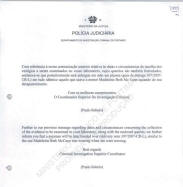 |
Further to our previous message regarding
dates and circumstances concerning the collection
of the evidence to be examined in your laboratory, along with
the enclosed queries, we further
inform you that a pyjamas will be later handed over (delivery
note 397/2007-CR-L), similar to
the one Madeleine Beth Mc Cann was wearing when she went
missing.
Best regards
Criminal Investigation Superior Coordinator
(Paulo Rebelo)
|
|
94 to 96
FSS Forensic report re DNA
Madeleine's pillowcase
(English) |
|
01-01-Outros Apensos 01 file1 pdf-01 pages94 to 96 |
|
also Processos Vol IX Page
2289 |
|
01_volume_I_o_apenso_I_Page_94 |
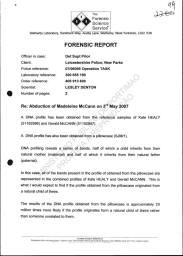 |
|
01_volume_I_o_apenso_I_Page_95 |
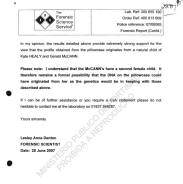 |
|
01_volume_I_o_apenso_I_Page_96 |
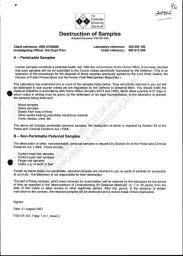 |
The Forensic Science Service -
Wetherby Laboratory, Sandbeck Way, Audby Lane, Wetherby, West
Yorkshire, LS22 7DN
FORENSIC REPORT
Officer in case: Det Supt Prior
Client: Leicestershire Police, New Parks
Police reference: 07/06085 Qperation TASK
Laboratory reference:
Order reference: 300 555190
Scientist:400 913 609
Scientist: LESLEY DENTON
Number of pages: 2
Re: Abduction of Madeleine McCann on 3rd May 2007
A DNA profile has been obtained from the reference samples of
Kate HEALY
(51162896) and Gerald McCANN (51162897).
A DNA profile has also been obtained from a pillowcase (SJM/1).
DNA profiling reveals a series of bands, half of which a child
inherits from their
natural mother (maternal) and half of which inherits from their
natural father
(paternal)
In this case, all of the bands present in the prof - e of
abtained from the pillowcase are
represented in the combined profiles of Kate HEALY and Gerald
McCANN. This is
what I would expect to find if the profile obtained from the
pillowcase originated from
a natural child of theirs.
The results of the DNA profile obtained from the pillowcase is
approximately 29
million times more likely if the profile originates form a
natural child of theirs rather
than someone unrelated to them.
In my opinion, the results detailed above provide extremely
strong support for the
view that the profile obtained from the pillowcase originated
from a natural child of
Kate HEALY and GERALD McCANN.
Please note: I understand that
the McCANN's have a second female child. It
therefore remains a formal possibility that the DNA on the
pillowcase could
have originated from her as the genetics would be in keeping
with those
described above.
If I can be of further assistance or you require a CJA statement
please do not
hesitate to contact me at the laboratory on 01937 548287.
Yours sincerely
Lesley Anne Denton
FORENSIC SCIENTISTS
Date: 28 June 2007
========================================
Outros Apensos pdf01 page97
(96)
=========================================
FSS - The Forensic Science
Service
Destruction of Samples
(Related Document: FSS-GP-050)
Code:
Client reference: URN 07106085
Laboratory reference:
300 655 190
Investigating Officer: Det Supt
Prior Order reference:
400 913 609
|
|
A - Perishable Samples
Certain samples constitute a potential health risk. With the
concurrence of the Home Office, it has been decided that such
samples
will not be submitted to the Courts unless specifically
requested by the Defence (This is an extension of the procedures
for the
disposal of blood samples previously agreed by the Lord Chief
Justice, the Director of Public Prosecutions and the former
Chief
Metropolitan Magistrate.)
The Laboratory has examined one or more of the samples listed
below. They will not be returned to you but will be destroyed
in due course unless we are requested by the Defence to
preserve them. You should notify the Defence Solicitors in
accordance
with Home Office Circulars 40/73 and 74/82, which allow a period
of 21 days in which notice in writing must be given,
by the defendant or his legal representative, to the laboratory
to prevent the samples being destroyed.
- Blood samples
- Saliva samples
- Swabs from body orifices
- Other swabs bearing potentially hazardous material
- Vomit, faeces, urine, etc
The above list includes perishable personal samples, the
destruction of which is required by Section 64 of the Police and
Criminal Evidence Act, (1984).
B - Non-Perishable Personal
Samples
The destruction of other, non-perishable, personal samples is
required by Section 64 of the Police and Criminal Evidence Act,
(1984). These include:
- Control head hair samples
- Control pubic hair samples
- Finger nail samples
- Casts, e.g. of teeth or feet
Except as below these non-perishable, personal samples are
returned to you as parts of exhibits for production at court
etc. The laboratory is not responsible for their destruction.
The part of these samples, which were removed for examination,
will be retained by the laboratory for the period of time as
specified in the 'Memorandum of Understanding for Retained
Materials' (3, 7 or 30 years) from the date of this notice to
allow access to other legitimate parties. After this period, in
the absence of written instruction to the contrary, the retained
samples will be destroyed and a record made of their
destruction.
Signed:
Date: 21 August 2007
FSS-GF-247, Page 1 of 1, Issue 4 |
|
300 to 326
Translation of FSS statement
John Robert Lowe 2008.07.18 |
|
01-02-OUTROS
APENSOS I, volume II,
Pages 300-325 |
|
o_apenso_1_Vol_2_p300 |
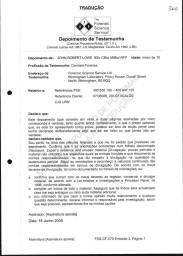 |
|
o_apenso_1_Vol_2_p301 |
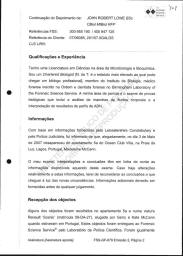 |
|
o_apenso_1_Vol_2_p302 |
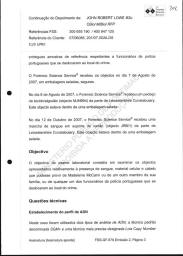 |
|
o_apenso_1_Vol_2_p303 |
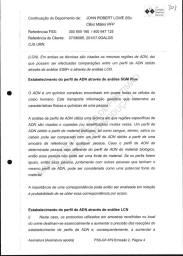 |
|
o_apenso_1_Vol_2_p304 |
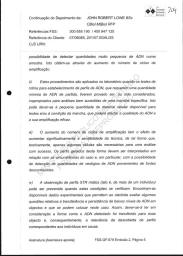 |
|
o_apenso_1_Vol_2_p305 |
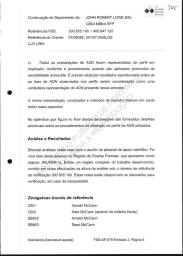 |
|
o_apenso_1_Vol_2_p306 |
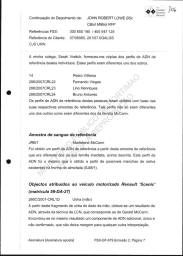 |
|
o_apenso_1_Vol_2_p307 |
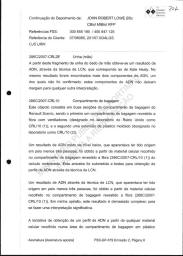 |
|
o_apenso_1_Vol_2_p308 |
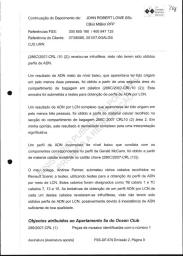 |
|
o_apenso_1_Vol_2_p309 |
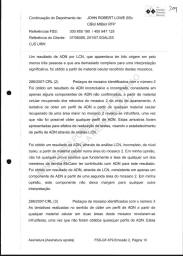 |
|
o_apenso_1_Vol_2_p310 |
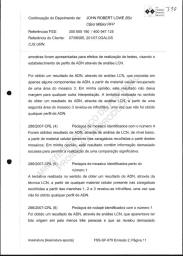 |
|
o_apenso_1_Vol_2_p311 |
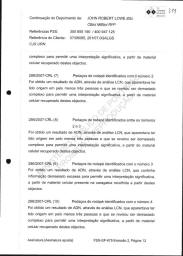 |
|
o_apenso_1_Vol_2_p312 |
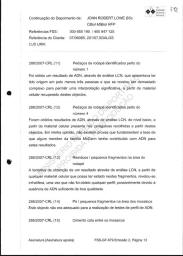 |
|
o_apenso_1_Vol_2_p313 |
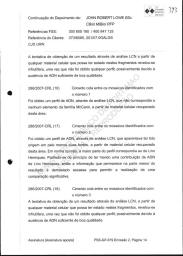 |
|
o_apenso_1_Vol_2_p314 |
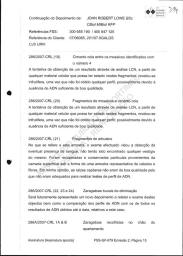 |
|
o_apenso_1_Vol_2_p315 |
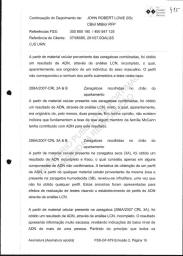 |
|
o_apenso_1_Vol_2_p316 |
 |
|
o_apenso_1_Vol_2_p317 |
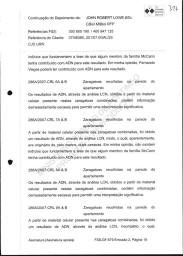 |
|
o_apenso_1_Vol_2_p318 |
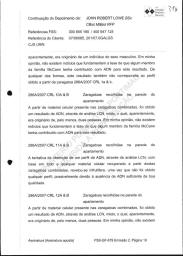 |
|
o_apenso_1_Vol_2_p319 |
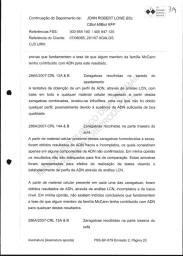 |
|
o_apenso_1_Vol_2_p320 |
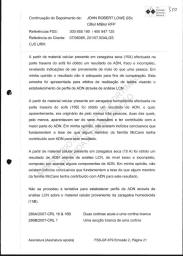 |
|
o_apenso_1_Vol_2_p321 |
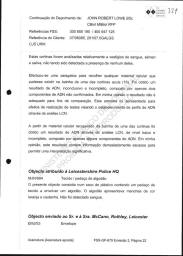 |
|
o_apenso_1_Vol_2_p322 |
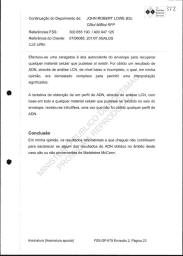 |
|
o_apenso_1_Vol_2_p323 |
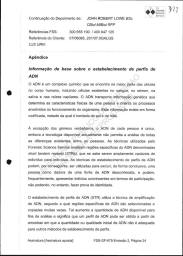 |
|
o_apenso_1_Vol_2_p324 |
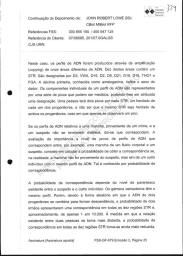 |
|
o_apenso_1_Vol_2_p325 |
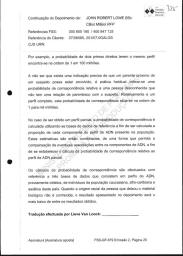 |
|
o_apenso_1_Vol_2_p326 |
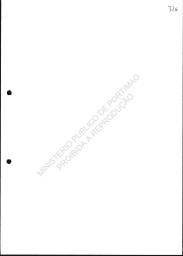 |
Manual Pages 300-326
PDF ref:
02-volumeII-apensoI-pages18-43
TRANSLATION
Witness deposition
(Criminal Procedure Rules, r27.1
(1);
Criminal Justice Act 1967, s.9;
Magistrates' Courts Act 1980,
s.5B)
Deposition of: JOHN ROBERT
LOWE BSc CBiol MlBiol RFP Age: Older
than 18
Profession of Witness:
Forensic Scientist
Address of Witness:
Forensic Science Service Ltd.,
Birmingham Laboratory, Priory House,
Gooch Street North,
Birmingham, B5 6QQ
With
respect to:
References FSS: 300 655 190 / 400
947 125
References Client: 07/06085,
201/07.0GALGS
CJS URN:
I
declare that:
This deposition (consisting of
twenty two pages signed by me)
corresponds to the truth, to the
best of my knowledge, and I give it
knowing that, if it is presented as
evidence, I could be subject to
[lit: the target of] penal action in
the case I had deliberately declared
something that I knew to be false or
that I thought was not the truth;
I
declare also that,
I am expert in the area of forensic
sciences and that I was asked to
give a deposition. I confirm that I
have read the directions [guidance]
in the pamphlet
Disclosure: Expert's evidence and
unused material
[Divulgacao: provas periciais
e material nao utilizado]
that specifies my functions and
documents my responsibilities, with
respect to the quality of the
disclosure of an expert witness. I
followed that guidance and
understand the ongoing nature of my
responsibilities in terms of
disclosure. In accordance with my
duties of disclosure, as documented
in the guidance pamphlet, I:
a. confirm that I complied with my
duty to record, to conserve and to
divulge material, in accordance with
the Law relating to Investigations
and the Penal Process, of 1996, as
amended;
b. compiled an index of all the
material. I assure that such index
will be updated in the case
additional material is delivered to
me or comes forth [emerges];
c. am advised that in the case my
opinion changes relative to any
determining [decisive/conclusive]
question, I am obligated [obliged]
to inform the person responsible for
the investigation, as soon as
possible, presenting him with my
reasons.
Signed: [Signature appended]
Data: 18 Junho 2008
FSS-GF-679 Emissao 2, Pagina 1
Qualifications and Experience
I have a degree in Sciences in the
areas of Microbiology and
Biochemistry. I am a Chartered
Biologist [Note: the highest status
achievable by a professional
biologist], a member of the
Institute of Biology, a forensic
doctor enrolled in the Order and a
forensic scientist in the Birmingham
Laboratory of the Forensic Science
Service. My area of specialty is the
examination of biological evidence
including the analysis of spots of
body fluid and the interpretation of
DNA profile results.
Information
Based on the information furnished
by the Leicestershire Constabulary
and the Pol - ia Judiciaria, I was
informed that, allegedly, on 3 May
2007 Madeleine McCann disappeared
from apartment 5A, Ocean Club, na
Praia da Luz, Lagos, Portugal.
My examinations, interpretations and
conclusions are in line with the
statements of information available
during the examination. In the case
there are alterations relating to
that information, I shall have to
reconsider the conclusions that I
drew in the light of the new
circumstances. Additional
information will have to be
furnished prior to any trial.
Receipt of the objects
Some of the objects that were
collected from apartment 5A and from
a vehicle, Renault 'Scenic'
(matricula 59-DA-27), hired by Gerry
e Kate McCann when they were in
Portugal. Those objects were
delivered to the Forensic Science
Service(R) by the Police Science
Laboratory.
FSS-GF-679 Emissao 2, Pagina 2
At the same time, reference samples
from those Portuguese police
officers who had been active in the
crime scene were delivered.
The Forensic Science Service(R)
received the [above] objects on 7
August 2007, in sealed, secure
packages.
On 8 August 2007, the Forensic
Science Service(R) received a piece
of cloth/cotton wool (object MJN994)
from Leicestershire Constabulary.
That object was inside a sealed
package.
On 12 October 2007, the Forensic
Science Service(R) received a blood
spot in a cardboard frame (object
JRB/1) from Leicestershire
Constabulary. That object was inside
a sealed package.
Objective
Th objective of the laboratory
examination was to examine the
presented objects with respect to
the presence of blood, cellular
material and hair that may prove to
be [have been] from Madeleine McCann
or one or other member of her
family, or from any of the
Portuguese police who had been
active [working/present] at the
crime scene.
Technical questions
Establishment of the DNA profile
In
this case two types of DNA analysis
were used: the standard technique
called SGM+ and a more precise one
called Low Copy Number (LCN).
FSS-GF-679 Emissao 2, Pagina 3
Both techniques look at the same
regions of DNA, thereby allowing a
comparison to be made between DNA
profiles obtained through SGM+ with
those obtained through LCN.
Establishment of the DNA profile
through SGM Plus
DNA
is a complex chemical found in
almost every cell of the human body.
It carries genetic information that
determines the physical and chemical
characteristics of a person.
DNA analysis uses a technique in
which specific regions [areas] are
seen and copied (or amplified) many
times. A DNA profile obtained from
biological material, such as blood,
semen, saliva or hair may be
compared with a DNA profile obtained
from a reference sample of any
person. In the case that the DNA
profile of the particular person is
different from the DNA profile of
the biological material, then that
person is not the source of that
material. If the profiles are equal
[match], then that person, together
with other persons having the same
DNA profile, may be considered as a
potential source of the material.
The significance [import] of a match
may then be analysed in relation to
the probability of obtaining that
match by chance.
Establishment of the DNA profile
through LCN
i)
in this case, the protocols used on
samples collected from a crime scene
serve, essentially, to increase the
precision of the [chemical]
reactions in the establishment of
the DNA profile and, consequently,
to increase the possibility to
detect extremely small quantities of
DNA in a sample. This is achieved
through increasing the number of
amplification cycles.
FSS-GF-679 Emissao 2, Pagina 4
ii)
These procedures to establish a DNA
profile are applied in the
laboratory when routine tests that
require a minimum quantity of DNA to
be extracted have proven to be, or
are considered, inappropriate for
successful analyses of a specific
sample. This may have to [be done
with] a small quantity of cellular
material available for tests and/or
[due to] the condition of the spot
[speck], that can affect the quality
of DNA and its effective [efficient]
amplification.
iii) Increasing the number of
amplification cycles has the effect
of significantly increasing the
sensitivity of the technique, such
that, theoretically, only some [a
few] cells are necessary for a
successful analysis. The profiles
generated in this way should [must]
be interpreted in relation to the
circumstances of the case and, in
particular, to the possibility of
detection of quantities of vestigial
DNA originating from unknown
sources.
iv)
A observacao de perfis STR mistos
(isto e, de mais de um individuo)
pode ser prevenida quando estas
condicoes se verificam.
TRANSLATOR'S NOTE: This sentence can
have several meanings. The literal
translation is:
"The observation of mixed STR
profiles (that is, from more than
one person) may be prevented when
those conditions occur."
If, however, the writer is intending
to convey a linkage with his
previous paragraph, it can be
translated as:
"Mixed DNA profiles may be predicted
[alternative meaning of 'prevenir':
to warn; to forewarn] when those
conditions [from the previous
paragraph, i.e. the possibility of
unknown sources] occur.
We would need to see the actual
English report written by Lowe to
understand his intended meaning.
Experimental data is available
that permits a scientist to assess
some questions relating to the
transference and persistence of
low-level DNA in objects and if they
can be put together in [whether they
- the questions/assessments - are
relevant to] this case. Hence,
consideration must be given to the
manner in which the detected DNA was
transferred to the object and,
consequently, the relevance of the
discovery of the corresponding DNA
profiles to those individuals
concerned.
TRANSLATOR'S NOTE: The entire
paragraph above was fraught with
difficulty, mainly because of its
relevance and importance when we
read several of Lowe's analyses
later on in the report. The
encountered difficulty raised the
question in my mind as to whether
the English-to-Portuguese
translator, Lieve van Loock, simply
converted written words - as I am
attempting to do in reverse - or if
(s)he actually had access to Lowe in
order to question his intended
meaning. If the former then (s)he,
like me, was faced with the need to
decide on an intended meaning before
selecting the words to be written in
the translation. In other words, I
could be attempting to translate a
mis-translation of the original
English.
Having said that, however, the above
difficulty does not detract from the
interpretation of what Lowe said in
his individual analyses, as we shall
see later.
FSS-GF-679 Emissao 2, Pagina 5
v)
All the preparations of DNA were
done in duplicate, conforming to
procedure when protocols pertaining
to increased sensitivity are
applied. It [this] is required [in
order] to attain reproducible
results before the strips of DNA
observed in the profiles will be
considered as a true representation
of the DNA present in this [the]
sample.
My interpretation(s), conclusions
and methods of work took into
account all of the above aspects.
[Alternatively: I was mindful of all
the above aspects when performing my
work, when making my
interpretations, and drawing my
conclusions.]
In the appendix at the end of this
statement additional details are
furnished about the procedures used
in obtaining the DNA profiles.
Analysis and Results
I performed analyses in this case
with the help of scientific support
personnel. A list of those people
was made in the Record [register] of
Forensic Examination, which I
present as object [document]
JRL/FER/1a. A complete record of
work performed, with notes made at
the time of the work, exists under
the reference 300 655 190. Those
notes are available for verification
[examination] in the laboratory, if
required.
Oral
swabs of reference material
CB/1 Gerald McCann
CB/2 Kate McCann (nee Healy)
SBM/2 Amelie McCann
SBM/3 Sean McCann
My colleague, Sarah Vraitch,
furnished me with copies of
reference DNA profiles of the above
individuals. Each of the profiles
was different from the others.
FSS-GF-679 Emissao 2, Pagina 6
14 Pedro Vilhena
286/2007CRL22 Fernando Viegas
286/2007CRL23 Lino Henriques
286/2007CRL24 Bruno Antunes
The DNA profiles of these persons
were obtained from their respective
samples. The profiles were not only
different from each other, they were
different from those of the McCann
family.
Reference sample of blood
JRB/1 Madeleine McCann
From this sample was obtained a DNA
reference sample that was different
from those of her immediate family,
described above. This DNA profile
was the same as that obtained from
possible spots of saliva existing on
the pillowcase (SJM/1).
Objects attributed to the motor
vehicle Renault 'Scenic' (matricula
59-DA-27)
286C/2007-CRL1 D Nail ([human] hand)
From this fragment of a nail from
the finger of a [human] hand, a DNA
result was obtained through the LCN
technique which corresponded to
Gerald McCann. In the same result an
additional DNA component, unique and
unconfirmed, was found that left no
room for any other interpretation.
FSS-GF-679 Emissao 2, Pagina 7
286C/2007-CRL2E Nail (hand)
From this fragment ... a DNA result
was obtained through the LCN
technique which corresponded to Kate
Healy. In the same DNA result were
found two more DNA components, one
of which was not confirmed; these
DNA components left no room for any
other interpretation.
286C/2007-CRL10 Baggage compartment
This object comprised two sections
of the baggage compartment of the
Renault Scenic, the first being a
baggage compartment lined with
fabric with ventilation holes
(designated in the UK laboratory as
CRL/10(1)) and, the second a moulded
plastic extension (designated in the
laboratory as CRL/10(2)).
A mixed, low-level DNA result,
appearing to be from at least three
people, was obtained from the
cellular material collected
(harvested) from the baggage
compartment lined with fabric
(286C/2007-CRL/10(1)) of the motor
vehicle. That sample was submitted
to tests to obtain DNA profiles
through the LCN technique.
A DNA result through the LCN
technique, which appeared to be from
at least three persons, was obtained
from the cellular material collected
(harvested) from the baggage
compartment lined with fabric
(286C/2007-CRL/10(1)). In my
opinion, this result is too complex
to make a meaningful interpretation.
FSS-GF-679 Emissao 2, Pagina 8
The attempt to obtain a DNA profile
from any cellular material collected
from the plastic area on the baggage
compartment (286C/2007-CRL /10(2))
was unfruitful [fruitless, in vain,
useless, unproductive,
unsuccessful], because no DNA
profile was obtained.
A mixed, low-level DNA result, that
appeared to be from at least two
persons, was obtained from a second
area of the baggage compartment
plastic (286C/2007-CRL /10(2)). This
sample was submitted for tests to
obtain DNA profiles through LCN.
A DNA result by complex LCN that
appeared to be from at least three
persons, was obtained from cellular
material collected on the section of
the baggage compartment 286C 2007
CRL10 (2) area 2. In my opinion,
that result is too complex for a
meaningful interpretation.
An incomplete, low-level DNA profile
that matched corresponding
components in the profile of Gerald
McCann was obtained from cellular
material present on the card key -
(286C/2007-CRL (12)).
I
guess this is the fob of the
car-keys
My colleague, Andrew Palmer,
submitted various hair collected
from the Renault Scenic for tests,
using ... LCN.
Those hairs were designated as 7B
hair 1 and 7C hairs 7, 13 e 15.
Attempts to obtain a DNA profile of
each hair by LCN was unfruitful,
because no DNA profile was obtained
by LCN, possibly due to there being
an insufficient quantity of good
quality DNA.
FSS-GF-679 Emissao 2, Pagina 9
Objects attributed to the Apartment
5A of the Ocean Club
286/2007-CRL (1) Pieces of
floor-tile identified as number 1
A DNA result by LCN, that appeared
to be from at least three persons
and that was too complex for a
meaningful interpretation, was
obtained from the cellular material
collected from these floor tiles.
286/2007-CRL (2) Pieces of
floor-tile identified as number 2
An inconclusive, incomplete DNA
result, consisting of only some
unconfirmed DNA components, was
obtained from the cellular material
recovered from the edges of
floor-tile 2 from the apartment
floor. The attempt to obtain a DNA
profile from any cellular material
recovered from the larger area of
floor-tile 2 was unfruitful, given
that it was not possible to obtain
any DNA profile. These samples were
then subjected to LCN analysis.
An incomplete, low-level DNA result
was obtained through LCN from
cellular material in an area of
floor-tile 2. In my opinion, there
is not any positive proof that
supports the theory of any of the
members of the McCann family to have
contributed DNA to this result. A
DNA result was obtained through LCN
consistent with only one DNA
component from a second area of
floor-tile 2. In my opinion, this
component leaves no room for any
other interpretation.
286/2007-CRL (3) Pieces of
floor-tile identified as number 3
The attempts to a DNA profile from
any cellular material in two areas
of this floor-tile were unfruitful,
given that no DNA profile was
obtained. These samples were
submitted for LCN analysis.
FSS-GF-679 Emissao 2, Pagina 10
A DNA result that consisted of only
some DNA components was obtained
through LCN analysis of cellular
material recovered from one area of
floor-tile 3. In my opinion, this
result left no room for any other
interpretation. The attempt made the
obtain a DNA profile through LCN
from a second area of floor-tile 3
was unfruitful, given that no
profile was obtained.
286/2007-CRL (4) Pieces of
floor-tile identified as number 4
Low-level DNA results were obtained
through LCN from cellular material
present in swabs collected from
these floor-tiles. In my opinion,
this resuly contained information
too meagre [scanty/poor] to permit a
meaningful comparison.
286/2007-CRL (5) Pieces of
floor-tile identified close to
number 1
The attempt to obtain a DNA result
through the LCN technique from some
cellular material present in swabs
collected from the marks [spots] 1,
2 and 3 were unfruitful, given that
no DNA profile was obtained.
286/2007-CRL (6) Pieces of skirting
board identified as number 1
A DNA result that appeared to be
from at least three persons and that
was too complex to permit a
meaningful interpretation was
obtained through LCN from these
objects.
FSS-GF-679 Emissao 2, Pagina 11
286/2007-CRL (7) Pieces of skirting
board identified as number 2
A DNA result that appeared to be
from at least three persons and that
was too complex to permit a
meaningful interpretation was
obtained through LCN from cellular
material recovered from these
objects.
286/2007-CRL (8) Pieces of skirting
board identified as numbers 2 and 3
A DNA result that appeared to be
from at least three persons and that
was too complex to permit a
meaningful interpretation was
obtained through LCN from cellular
material recovered from these
objects.
286/2007-CRL (9) Pieces of skirting
board identified as number 3
A DNA result that contained
information too meagre to permit a
meaningful interpretation was
obtained through LCN from cellular
material present in swabs collected
from these objects.
286/2007-CRL (10) Pieces of skirting
board identified as number 4
A DNA result that appeared to be
from at least three persons and that
was too complex to permit a
meaningful interpretation was
obtained through LCN from cellular
material recovered from these
objects.
FSS-GF-679 Emissao 2, Pagina 12
286/2007-CRL (11) Pieces of skirting
board identified close to number 1
A DNA result that appeared to be
from at least three persons and that
was too complex to permit a
meaningful interpretation was
obtained through LCN from cellular
material recovered from these
objects.
286/2007-CRL (12) Pieces of skirting
board identified close to number 4
Low-level DNA results were obtained
through LCN from cellular material
present in swabs collected from
these objects. In my opinion, there
exists no proof that supports the
theory that any member of the McCann
family had contributed DNA to these
results.
286/2007-CRL (13) Residual/small
fragments in the area of the
skirting board.
The attempt to obtain a result
through LCN from any cellular
material that may have been in these
fragments was unfruitful, given that
no profile was obtained, possibly
due to the absence of sufficient
good quality DNA.
286/2007-CRL (14) Dust/small
fragments in the area of the floor
tiles
This object was not adequate to
perform DNA profile tests.
FSS-GF-679 Emissao 2, Pagina 13
|
|
|
286/2007-CRL (15) Cement-glue [grouting] between the floor tiles
The attempt to obtain a result through LCN from any cellular
material that may have been in these fragments was unfruitful,
given that no profile was obtained, possibly due to the absence
of sufficient good quality DNA.
286/2007-CRL (16) Cement-glue [grouting] between the floor tiles
identified as number 1
A DNA profile that did not match any [of the five members] of
the McCann family was obtained through LCN from cellular
material recovered in that area.
286/2007-CRL (17) Cement-glue [grouting] between the floor tiles
identified as number 2
A DNA profile that appeared to be from at least two sources was
obtained through LCN from cellular material recovered in that
area. In my opinion, the major part of the profile matched that
of Lino Henriques. Breaking [departing] from the principle, for
it to have had a DNA contribution from Lino Henriques then the
remaining information in the smaller part of the result is too
meagre to permit a meaningful interpretation.
286/2007-CRL (18) Cement-glue [grouting] between the floor tiles
identified as number 3
The attempt to obtain a result through LCN from any cellular
material that may have been in these fragments was unfruitful,
given that no profile was obtained, possibly due to the absence
of sufficient good quality DNA.
FSS-GF-679 Emissao 2,
Pagina 14
286/2007-CRL (19) Cement-glue [grouting] between the floor tiles
identified as number 4
The attempt to obtain a result through LCN from any cellular
material that may have been in these fragments was unfruitful,
given that no profile was obtained, possibly due to the absence
of sufficient good quality DNA.
286/2007-CRL (20) Fragments of floor tile and grouting
The attempt to obtain a result through LCN from any cellular
material that may have been in these fragments was unfruitful,
given that no profile was obtained, possibly due to the absence
of sufficient good quality DNA.
286/2007-CRL (21) Fragments of bush/shrubbery
Insofar as it relates to this sample, the examination performed
was aimed at the detection of the possible presence of blood, no
trace thereof having been found. Particles from the superficial
surface layer were recovered and preserved in a way similar to
that of hairs and fibres. In my opinion, the capillary roots
were not good quality as they were not adequate to perform DNA
profile tests.
286/2007-CRL (22, 23 e 24) Oral swabs for elimination
A new deposition to report the examination of these objects will
be presented at a future time along with the DNA profiles
obtained to date from all the DNA results relating to this case.
FSS-GF-679 Emissao 2, Pagina 15
286A/2007-CRL 1A & B Swabs collected from the floor of the
apartment
An incomplete DNA result, apparently originating from a male
individual but not matching any other profile obtained in this
case, was obtained through LCN from the cellular material
present in the combined swabs.
286A/2007-CRL 2A & B Swabs collected from the floor of the
apartment
A mixed DNA result, apparently originating from at least two
people, was obtained through LCN from the cellular material
present in the combined swabs. In my opinion, there are no
indications that justify [confirm/prove] the theory that any
member of the McCann family had contributed DNA to this result.
286A/2007-CRL 3A& B Swabs collected from the floor of the
apartment
An incomplete and weak DNA result comprising only some
unconfirmed DNA components was obtained from the cellular
material present in the dry swab (3A). The attempt to obtain a
result from any cellular material that may have been in the same
area and present in the wet swab (3B) was unfruitful, given that
no profile was obtained. These samples were submitted for LCN
tests.
An incomplete DNA result was obtained through LCN from cellular
material present in the swab (286A/2007 CRL 3A). The low-level
DNA result showed very meagre information indicating more than
one person. Departing from the principle that all confirmed DNA
components within the scope of this result originated from a
single source, then these pointed to corresponding components in
the profile of Madeleine McCann; however, if the DNA within the
scope of this result originated from more than one person then
the result could be explained as being DNA originating from [a
mixture of DNA from both] Kate Healy and Gerald McCann, for
example. DNA profiles established through LCN are extremely
sensitive; it is not possible to attribute this DNA profile to a
particular body fluid. nor to determine how or when that DNA was
transferred to that area.
FSS-GF-679 Emissao 2, Pagina 16
A low-level DNA result was obtained through LCN from the
cellular material present in the swab (286A/2007 CRL 3B). In my
opinion, there are no indications that justify [confirm/prove]
the theory that any member of the McCann family had contributed
DNA to this result.
286A/2007-CRL 4A & B Swabs collected from the wall of the
apartment
An incomplete DNA result, apparently originating from a female
individual, was obtained through LCN from the cellular material
present in the combined swabs. In my opinion, there are no
indications that justify [confirm/prove] the theory that any
member of the McCann family had contributed DNA to this result.
286A/2007-CRL 5A & B Swabs collected from the wall of the
apartment
A mixed DNA result, apparently originating from at least two
persons, was obtained through LCN from the cellular material
present in the combined swabs. In my opinion, there are no
indications that justify [confirm/prove] the theory that any
member of the McCann family had contributed DNA to this result.
In my opinion, Fernando Viegas could have contributed DNA to
this result.
FSS-GF-679 Emissao 2,
Pagina 17
286A/2007-CRL 6A & B Swabs collected from the wall of the
apartment
The DNA results obtained through LCN from cellular material
present in these combined swabs contained information too meagre
to permit a meaningful comparison.
286A/2007-CRL 7A & B Swabs collected from the wall of the
apartment
A mixed DNA result, apparently originating from at least two
persons, was obtained through LCN from the cellular material
present in the combined swabs. In my opinion, there are no
indications that justify [confirm/prove] the theory that any
member of the McCann family had contributed DNA to this result.
286A/2007-CRL 8A & B Swabs collected from the wall of the
apartment
The DNA results obtained through LCN from cellular material
present in these combined swabs contained information too meagre
to permit a meaningful comparison.
286A/2007-CRL 9A & B Swabs collected from the wall of the
apartment
An incomplete DNA result, apparently originating from a male
individual, was obtained through LCN from the cellular material
present in the combined swabs. In my opinion, there are no
indications that justify [confirm/prove] the theory that any
member of the McCann family had contributed DNA to this result.
Also, this result did not match in any way the profile obtained
from swabs 286A/2007 CRL 1A & B.
FSS-GF-679 Emissao 2, Pagina 18
286A/2007-CRL 10A & B Swabs collected from the wall of the
apartment
A mixed DNA result, apparently originating from at least two
persons, was obtained through LCN from the cellular material
present in the combined swabs. In my opinion, there are no
indications that justify [confirm/prove] the theory that any
member of the McCann family had contributed DNA to this result.
286A/2007-CRL 11A & B Swabs collected from the wall of the
apartment
The attempt to obtain a DNA result through LCN from all and any
cellular material recovered from these combined swabs was
unfruitful, given that no profile was obtained, possibly due to
the absence of sufficient good quality DNA.
286A/2007-CRL 12A & B Swabs collected from the wall of the
apartment
A mixed DNA result, apparently originating from at least two
persons, was obtained through LCN from the cellular material
present in the combined swabs. In my opinion, there is no
evidence that supports the theory that any member of the McCann
family had contributed DNA to this result.
FSS-GF-679 Emissao 2, Pagina 19
286A/2007-CRL 13A & B Swabs collected from the wall of the
apartment
The attempt to obtain a DNA result through LCN from all and any
cellular material recovered from these combined swabs was
unfruitful, given that no profile was obtained, possibly due to
the absence of sufficient good quality DNA.
286A/2007-CRL 14A & B Swabs collected from the rear of the sofa
Weak and incomplete DNA results consisting only of some
unconfirmed DNA components were obtained from the cellular
material present in these wet and dry swabs. In my opinion the
results are not adequate for comparison purposes. These samples
were submitted for LCN analysis.
A mixed, low-level DNA result was obtained through LCN from the
cellular material present in each of the swabs. In my opinion,
there are no conclusive indications that justify [confirm/prove]
the theory that any member of the McCann family had contributed
DNA to these results.
FSS-GF-679 Emissao 2, Pagina 20
286A/2007-CRL 15A & B Swabs collected from the rear of the sofa
A weak and incomplete DNA result showing indications as having
come from more than one person was obtained from the cellular
material present in dry swab (15A) effected on the rear of the
sofa. In my opinion the result is not adequate for comparison
purposes. These samples were submitted for LCN analysis.
A DNA result, apparently originating from at least three persons
of whom at least two were male and contributed the majority of
the DNA, was obtained from the cellular material present in the
wet swab (15B) effected on the rear of the sofa. In my opinion,
there are no conclusive indications that justify the theory that
any member of the McCann family had contributed DNA to this
result.
An incomplete, low-level DNA result, comprising only some DNA
components, was obtained through LCN from the cellular material
present in the dry swab (15A). In my opinion, there are no
conclusive indications that justify the theory that any member
of the McCann family had contributed DNA to this result.
The wet swab (15B) was not submitted for further LCN anaysis.
FSS-GF-679 Emissao 2, Pagina 21
286A/2007-CRL 16 & 16B Two blue curtains and one white curtain
286B/2007-CRL 1 One white section of a curtain
These curtains were analysed for traces of blood, semen and
saliva, none of which were detected. The hem of one of the blue
curtains (16) was swabbed to collect any cellular material that
might exist. An incomplete, inconclusive DNA result consisting
only of two unconfirmed DNA components was obtained. In my
opinion the result is not adequate for comparison purposes. The
sample was submitted for LCN analysis.
An incomplete, low-level DNA result, comprising only some DNA
components, was obtained through LCN from the cellular material
recovered from the hem of one the curtains. In my opinion, this
result contained information too meagre to permit a meaningful
interpretation.
Object
attributed to Leicestershire Police
HQ MJN/994 Cloth / piece of cotton wool
The object consisted a plastic bag containing a piece of cloth
around cotton wool which showed orange and brown spots. No blood
was detected.
FSS-GF-679 Emissao 2, Pagina 22
Object sent
to Mr & Mrs McCann, Rothley, Leicester
EMJ/53 Envelope
The envelope flap was swabbed to recover any cellular material
that might exist. An incomplete, low-level DNA result was
obtained through LCN which, in my opinion, was too complex to
permit meaningful interpretation.
The attempt to obtain a DNA result through LCN from all and any
cellular material that might have existed on the gum of the
envelope was unfruitful, given that no DNA profile was obtained.
Conclusion
In my opinion, the laboratory results that were attained did not
help to clarify whether or not the DNA results obtained within
the scope of this case were from Madeleine McCann.
FSS-GF-679 Emissao 2, Pagina 23 |
Basic information on the
establishment of DNA profiles.
DNA is a complex chemical that is
found in the majority of cells in
the human body, including cells in
the blood, semen, saliva and hair
roots. DNA carries genetic
information that determines physical
characteristics of a person and
directs the processes involved in
the functioning of an organism. This
information exists in the form of a
code, half of which is inherited
from the father and [half] from the
mother.
Except for truly identical twins,
the DNA of each person is unique,
although the technology currently
available today does not permit the
analysis of all the differences
between persons. The techniques used
by FSS analyses specific regions of
DNA known as short tandem repeats
(STRs), that are known to be amply
variable from individual to
individual. The techniques of
establishing DNA profiles can,
therefore, be used to exclude,
conclusively, one person as the
donor of an unknown DNA source, and
can, frequently, provide convincing
indications in terms of
participation [contribution - ],
though not allowing, as yet, proof
of identity.
The establishment of DNA profiles
(STR) uses the technique of DNA
amplification, through which
specific DNA regions are selected
and copied many times. This
increases the quantity of DNA
available for analysis and means
that a DNA profile can be obtained
from samples in which the initial
quantity or quality of DNA is not
adequate for other methods of
establishing profiles.
In this way, DNA profiles are
produced through amplification
(copying) of eleven different areas
of DNA. Ten of those areas contain
STR. They are known as D3, VWA, D16,
D2, D8, D21, D18, D19, THO1 and FGA.
The eleventh, known as amelogenina,
indicates the sex of the donor. The
individual components of a DNA
profile are represented by a series
of peaks that can be measured,
allowing them to be attributed a
designation [labelled - ]. One
person will have two peaks in each
STR, one inherited from each
progenitor [parent], unless the same
STR has been inherited from both
progenitors, in which case only one
peak will be observed.
If the DNA profiles relating to a
stain, obtained from a crime
[scene], and [that of] a suspect
reveal no differences, it is said
that they match. The estimation of
the amount of the level of proof of
DNA profiles that match between, for
example, a stain of body fluid and a
suspect, consists of calculating the
probability of obtaining the match
if, in reality, the stain was not
from the suspect, but was from
another individual with the same DNA
profile. That is known as the
probability of correspondence
[matching].
The probability of matching depends
upon the level of kinship [parental
similarity] existing between the
suspect and another individual. True
identical twins have the same
profile. But, due to the random
manner in which DNA from the two
progenitors combine to form the
descendant, the probability of two
siblings presenting a match in all
ten STR regions is, approximately,
one in ten thousand (1 in 10,000).
The more distant the relationship
becomes between two persons, the
more reduced becomes the probability
of matching in all ten STR regions.
For example, the probability of two
first cousins having the same
profile is of the order of one to
one hundred million (1 to
100-million).
Where there exists no clear
indication that a relative close to
the suspect is involved, it is
common practice to indicate a
probability of matching relative to
an unknown person who has no kinship
with the suspect. With a complete
profile this probability of matching
is of the order of one to one
thousand million (1 to
1,000-million) [or 1 to 1-billion
using U.S. numbering].
In the case of a partial profile
being obtained, the probability of
matching is calculated using
reference databases [tables] that
contain calculated proportions of
each DNA profile component present
in the general population. These
estimates are then combined in a
manner that permits compensation for
possible associations between DNA
components in order to establish the
calculation of the probability of
matching relating to the partial DNA
profile.
The calculations of probability of
matching are done using three
databases containing DNA profiles
obtained previously from individuals
of caucasian, afro-caribbean and
asiatic descent
of this country [namely,
U.K.] When the racial origin of a
person who left the biological
material is not known, the result
presented in the deposition will be
the lowest of the results obtained.
FSS-GF-679 Emissao 2, Pagina 24 to
26
|
|
|
Summary
Total samples/tests in report 64
Sample incomplete
16 times
DNA attempt "unfruitful" 15 times
No support for "theory" 13 times
Sample mixed
10 times
Sample too complex
9 times
Sample low-level
9 times
Sample too meagre
7 times
Named matches
6 times 3xfamily; 2xpolice; 1xMBM
Not tested
3 times WHY not?
Inadequate for testing
2 times
Unmatched profile
1 time Why not followed up?
---------------------------------------
At least 2 people
10 times
At least 3 people
11 times |
327 to 336
Translation of FSS statement
Andrew Lloyd Palmer
2007.11.09
327-333
Madeline's hair AL Palmer |
|
Outros Apensos 01 Volume 2
pages 327 to 336 |
|
o_apenso_1_Vol_2_p327 |
 |
|
o_apenso_1_Vol_2_p328 |
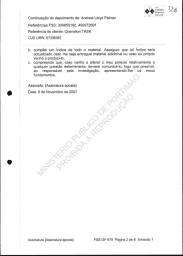 |
|
o_apenso_1_Vol_2_p329 |
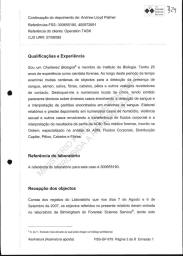 |
|
o_apenso_1_Vol_2_p330 |
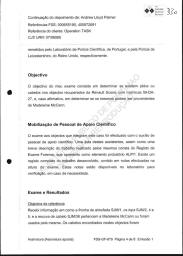 |
|
o_apenso_1_Vol_2_p331 |
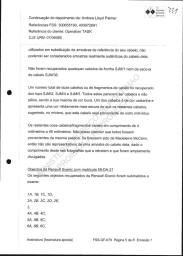 |
|
o_apenso_1_Vol_2_p332 |
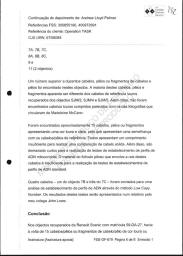 |
|
o_apenso_1_Vol_2_p333 |
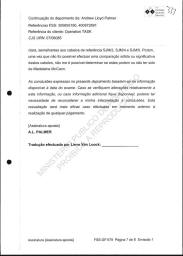 |
| o_apenso_1_Vol_2_p334 |
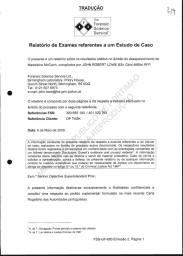 |
| o_apenso_1_Vol_2_p335 |
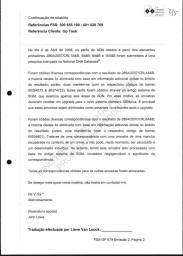 |
| o_apenso_1_Vol_2_p336 |
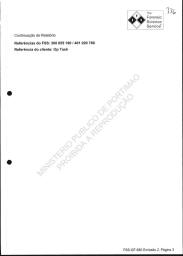 |
|
pages 327 to
333
Notes:
pdf 02 page 45-51 FSS Andrew Palmer
Notes:
"Cabelos" is used
only for hair from the head; "Pelos" is used for
all other body hair.
3. Sometimes verb
tenses swung from past to present and back again
within a paragraph, and to the future in one
case. As far as possible, I tried to be faithful
to the verb tenses as written.
============================
Witness deposition: Andrew Lloyd Palmer; Age:
Older than 18 years
Profession: Forensic scientist
Address: FSS
References: FSS: 300655190, 400972691; Client:
Operation TASK
CJS/URN: 07/06085
I declare that:
This deposition (comprising five pages signed by
me) is the truth, to the best of my knowledge,
and that I give it knowing that, if it should be
presented as evidence, I would be subject to
legal penalty should I have declared anything
that I know to be false or that I think is not
true;
I declare also that,
I am
expert in the field of forensic sciences and
that I was asked to give a deposition. I confirm
that I have read the guidelines contained in the
document Disclosure: Expert's evidence and
unused material, that specifies my functions and
documents my responsibilities, with respect to
disclosure as an expert witness.
- - - - - - - - - - -
I have followed directions [guidance - ] and
understand the ongoing nature of my
responsibilities in respect of disclosure. In
accordance with my duties of disclosure, as
documented in the booklet of directions
[standards and procedures manual - ], I:
a. confirm that I have performed my duties to
record, conserve and disclose material, in
accordance with the Law relating to
Investigations and Penal Process of 1996, as
amended;
b. have compiled an index of all the material. I
assure that such index will be updated should
further material be delivered to me or should I,
myself, produce any [further material];
c. understand that, should I come to alter my
understanding relating to any conclusion, I am
bound to communicate that as soon as possible to
the head of the investigation, presenting him
with my reasons [for such a change].
[TRANSLATOR'S NOTE: While the above is a
reasonable translation of the Portuguese
provided in the document, it must not be taken
to be a wholly accurate statement of the legal
'oath' actually signed by A.L.Palmer.]
Signed 9 November 2007
Qualifications and experience
I am a qualified
Chartered Biologist [Footnote 6 states:
The highest professional level achievable] and a
member of the Biological Institute. I have 25
years experience as a forensic scientist. During
this period I have examined hundreds of objects
in the detection of blood, semen, saliva,
fibres, hair, down and other trace material
derived from [human] contact. I have been
present at many crime scenes, having given
technical opinions in various cases involving
the detection of blood and the interpretation of
samples of blood spots/specks. I have drafted
reports and have given depositions in numerous
cases of homicide, sexual violence and other
cases involving the transfer of body fluids and
the interpretation of the results of DNA
profiles. I am a forensic -
doctor/practitioner - , registered with the
Order [presumably
of
Forensic Medicine],
specialising in DNA analysis, body fluids,
capillary distribution [system of blood flow
around the human body], down, hair and fibres.
Laboratory reference
The lab reference of this case is 300655190
Objects received
According to the lab records of 7 August and 6
September 2007 the objects referred to in this
report entered the FSS laboratory in Birmingham,
having been remitted by the Police Science
Laboratory of Portugal and by the Leicestershire
(UK) Police, respectively.
Objective
The objective of my examination was to determine
if down or hair was recovered from the Renault
Scenic 59-DA-27 and, if affirmative, to
determine if those may have come from Madeleine
McCann.
Mobilisation of scientific
support people
The examination of the objects in this case was
done with the assistance of scientific support
people. A list of those people, together with a
brief description of the work that each
performed, is in the Forensic Examination
Record/Register, which I present as exhibit
ALP/1. It is a complete record of all work done,
together with notes made during the examination.
These notes are available in the lab for
verification, if necessary.
Examination and results
Reference objects
I received [obtained] information from the
pillow-case SJM/1, the
tops SJM2, 4 and 5, and the hairbrush
SJM/36 belonging to Madeleine McCann or used by
her. The hair found on these objects was used in
substitution of [in place of] reference samples
of her hair, [which were] not considered to be
authentic samples of her hair.
No hair was recovered from the pillow-case SJM/1
nor the hairbrush SJM/36.
A total number of twelve [12] hairs or hair
fragments were recovered from the
tops
SJM/2, SJM/4 and SJM/5. All of these appeared to
be hair and not down, being mainly blonde in
colour. One of the hairs was brown and
distinctly darker than the other hairs,
suggesting, at the least, that this was a hair
from someone else.
The remaining eleven hairs/fragments varied in
length from 4 millimetres to 45 millimetres
[~1/8" to ~1,3/4"]. I could not conclude that
all hairs were from the same person. If they had
been from Madeleine McCann, then they are not
representative/typical/characteristic of a
sample of her hair, given the length of that
seen in photographs of her.
Objects from the
Renault Scenic - licence plate 59-DA-27
The following objects recovered from the scenic
were subjected to examination:
1A, 1B, 1C, 1D,
2A, 2B, 2C, 2D, 2E,
3,
4A, 4B, 4C,
5A, 5B, 5C,
6A, 6B, 6C,
7A, 7B, 7C,
8A, 8B, 8C,
9 and
11 (2 objects).
There were more than two hundred hairs, down or
fragments of hair and down. The majority
appeared to be different from the blonde
reference hairs recovered from SJM2, 4 and 5.
Furthermore, no blonde hair consistent with that
seen in photographs of Madeleine McCann was
found.
Approximately 15 hairs, down or fragments were
blonde and fair, presenting a similarity with
the reference material. All were of insufficient
length to make a solid [definitive] comparison.
Furthermore, they are too short to do
mitocondrial DNA tests. Folicle root material is
insufficient for standard DNA tests.
Four hairs - one from 7B and three from 7C -
were sent for
Low Copy Number DNA
testing. The results of those tests will be
presented by my colleague John Lowe.
Conclusion
In the objects recovered from the Scenic, there
were around 15 blonde/fair hairs similar to the
reference hairs from SJM2, 4 and 5. However, as
it was not possible to do solid [definitive] or
significant [forensically meaningful] tests it
is not possible for me to determine if, or not,
these could have been from Madeleine McCann.
The conclusions expressed in the present
deposition are based on information available at
the date of the examination. In the case that
there are changes to that information, or
additional information becomes available, it may
be necessary to reconsider my interpretation and
conclusions. That re-evaluation will be most
effective when done immediately prior to any
judgement.
A.L. Palmer
Translated by Lieve Van Loock.
============ END OF DEPOSITION ============
Subsequent action
-----------------------------------
pages 334-336
PDF ref: 02 - volume II - apenso I
TRANSLATION
Report of Examinations referred
to in a Case Study
This is a report about the results obtained within the scope of
the disappearance of Madeleine McCann as compiled by
JOHN ROBERT LOWE BSc Cbiol MlBiol RFP.
Forensic Science Service Ltd.,
Birmingham Laboratory, Priory House,
Gooch Street North, Birmingham, B5 6QQ
The report comprises two pages and talks about work performed
within the scope of of the case file with the following
reference:
Referencias FSS: 300 655 1 90 / 401 020 769
Referencia Cliente: OP TASK
Date: 6 Maio 2008
The true information in this report talks about examinations
referring to a case study done within the scope of the case file
noted above. The respective results obtained were recorded and
conserved in conformance with the guidance in the pamphlet
called Disclosure: Expert's
evidence and unused material. The true information in
this report is not intended to serve as probatory material.
Should this report or any of the information contained herein be
called for presentation against a defence it is understood that
it would be necessary to give a covering deposition under terms
of sections 9 and 10 of the Criminal Justice Act 1967.
Dear Detective Superintendent Prior,
This information is exclusive, confidential and constitutes a
response to the supplementary request contained in the recent
Rogatory Letter from the Portuguese authorities.
FSS-GF-680 Emissao 2, Pagina 1
On 9 April 2008, the DNA profiles obtained from the probatory
components [objects] 286A/2007/CRL1A&B, 4A&B, 9A&B e 16A&B were
submitted with a request to the National DNA Database(R).
Various matches were obtained with the results of
286A/2007/CRL4A&B; the majority of them were eliminated based on
additional information obtained from the result; however, two
remain (namely, bar codes 90264515 & 90374723). Those profiles
were obtained using the old SGM system which examined only six
areas of DNA. For this reason the samples should be upgraded
[re-tested] using the new standard system SGMplus. It is likely
that those samples would be eliminated after the upgrade.
Various matches were obtained with the results of
286A/2007/CRL9A&B; the majority of them were eliminated based on
additional information obtained from the result; however, one
remains (namely, bar code 80004801). It has matched with a
sample of a spot recovered from a crime and cannot, at this
time, be associated with a specific individual. Nevertheless, as
that sample was processed with the old SGM system I consider the
match to be of negligible significance.
All matches obtained from other samples were eliminated.
If you wish for more support with this material, don't hesitate
to contact me.
Yours faithfully
[Signature] John Lowe
Translation performed by Lieve Van Loock: |
|
122
Questions for FSS (English) 2007.12.12 |
|
02-Cartas
Rogatorias Vol II Page 122 |
| cr2_122 |
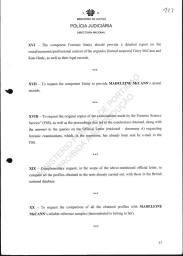 |
From Rogatory Letter sent to the
UK
Questions for FSS
P 122
XVIII To request the original copies of the examinations made by
the FSS, as well as the proceedings that led to the conclusions
obtained, along with the answers to the queries on the Official
Letter (enclosed - document A) requesting forensic
examinations, which in the meantime, has already been sent by
email to the FSS.
XIX Complementary request in the scope of the abovementioned
official letter, to compare all the profiles obtained in the
tests already carried out, with those in the British national
database.
XX To request the comparison of all the obtained profiles with
Madeleine McCann - s reliable reference samples (demonstrated to
belong to her). |
|
5 to 7
FSS examination report from
John Lowe 2008.05.22
(Portuguese) |
|
08-Cartas
Rogatorias Vol 8 Pages 5 - 7 |
Carta Rogatoria-Home OfficeIV.pdf
FSS - Forensic Science Service Ltd
REPORT OF EXAMINATION
This is the report of the results
for the disappearance of Madeleine McCann compiled by JOHN
ROBERT LOWE BSc Cbiol MIBiol RFP
Forensic Science Service Ltd
Birmingham Laboratory, Priory House,
Gooch
Street North, Birmingham, B5 6QQ
Tel 0121 607 6973
e-mail: john .......
This report consists of three pages
and relates the work carried out in the following case;
Reference:
Reference FSS: 300 655 190 / 401 020
769
Reference Customer: Task Operational
Date: May 22, 2008
The information provided in this
report is the result of examination work done in the case
referenced above.
The findings and results of the
examination were recorded and retained in accordance with the
manual described as 'Disclosure' (Revelation): Evidence of
experts and material not used. The information contained in this
report is not intended to be used as evidence, and it is agreed
that if this report or any information contained therein will be
used as defence evidence it will be necessary for me to provide
a statement under s9 or s10 CJA 1967
Dear Sir
The purpose of this report is to
summarize the results of several information searches conducted
using the National DNA Database and the use of a control
database.
The LCN DNA profile previously
obtained from the following submitted data were subjected to a
single search of the National DNA Database.
286A/2007/CRL1A & B
286A/2007/CRL4A & B
286A/2007/CRL9A & B
286A72007/CRL16A & B
Numerous similarities were returned
by the National DNA Database for the DNA profile obtained from
286A/2007/CRL4A & B; however, I used additional information
within the results that was not included in the search
parameters to eliminate all except two of these similarities.
The two similarities that remained were recorded with the bar
code 90264515 & 90374723. These are samples of DNA profiles
obtained using the old system of SGM which examines six areas of
DNA. The new system
SGM plus examines these six areas
plus four other areas. If these two profiles were updated, in my
opinion they would also be eliminated as possible donors of DNA,
given the result obtained from 286A/2007/CRL4A & B.
Numerous similarities were sent
[returned] by the National DNA Database for the DNA obtained
from 286A/2007/CRL9A & B, however, I used additional information
in results that was not included in the search parameters to
eliminate those similarities.
Numerous similarities were sent [returned]
by the National DNA Database for the DNA profile obtained from
286A/2007/CRL16A & B, however, I used additional information in
the results that was not included in the search parameters to
eliminate those similarities.
For information only, a database of
voluntary samples was constructed for the purpose of control
information. In accordance with available records, the database
comprised samples from 286 volunteers, four of which were
rejected. The DNA profiles from volunteers were compared with
the following samples:
286A/2007/CRL1A & B
286A/2007/CRL4A & B
286A/2007/CRL9A & B
286A/72007/CRL16A & B
The voluntary samples were also
compared with 'crime stain 1', a DNA profile obtained by
Portuguese scientists using their DNA profile system. The
profile was recovered from suspected semen on a blanket in the
apartment 5.
From the available records, I
conclude that 281 voluntary samples were eliminated as
contributors of DNA to the list of search profiles above, since
its profile does not match the profile sought; consequently, the
DNA can not have originated from them.
I conclude further that, the DNA
profiles obtained from the 'crime stain 1' and 286A/2007/CRL9A &
B coincide with Charlie Gordon (bar code 51156964). I believe
that Charlie Gordon was born on 29 January 2005, and if this is
the case, in my opinion, the DNA profile obtained in 'crime
stain 1' is not the result of semen found on the blanket.
If more information is needed in
this matter, please do not hesitate to contact me.
Sincerely,
John Lowe
|
|
|
TO HELP KEEP THIS SITE ON LINE PLEASE
CONSIDER |
|
|
|
|